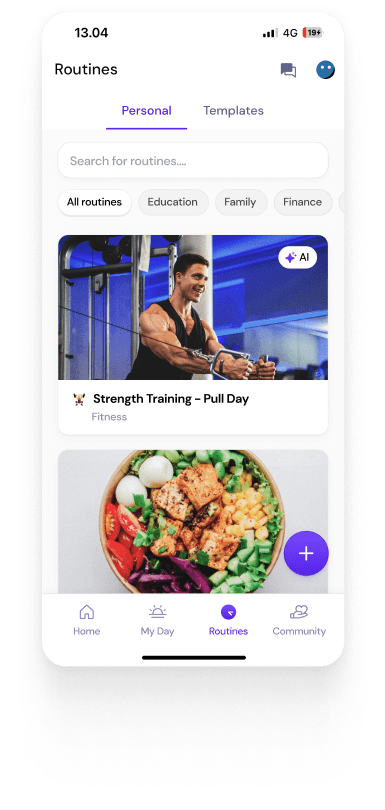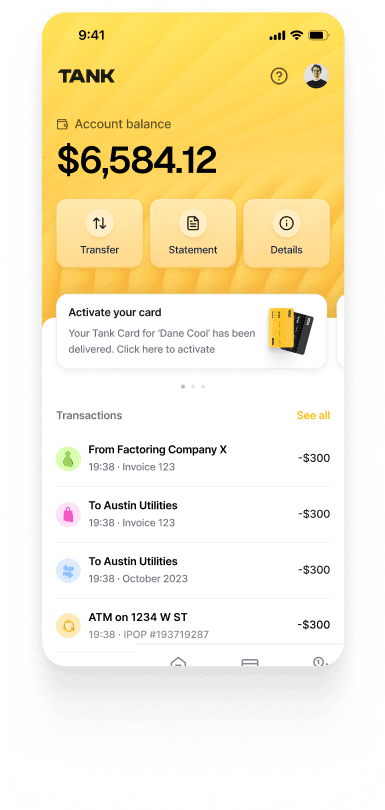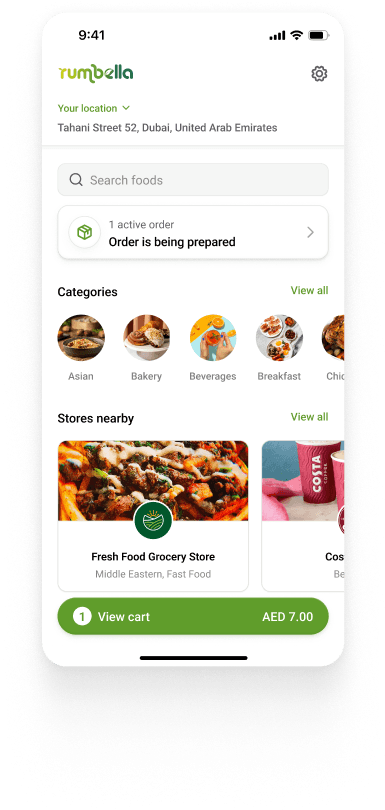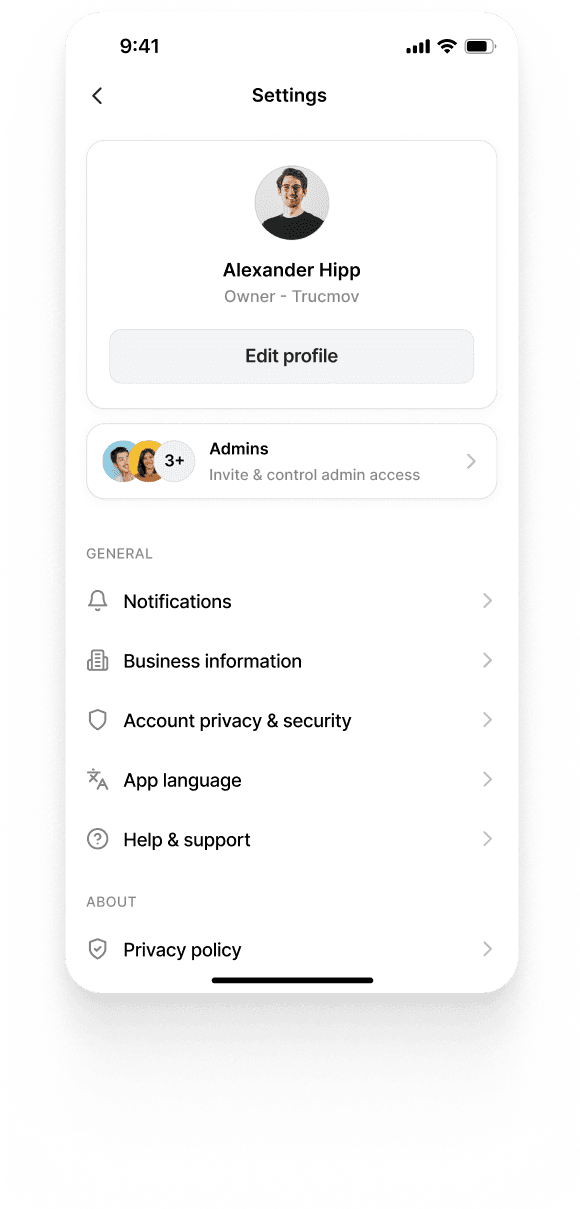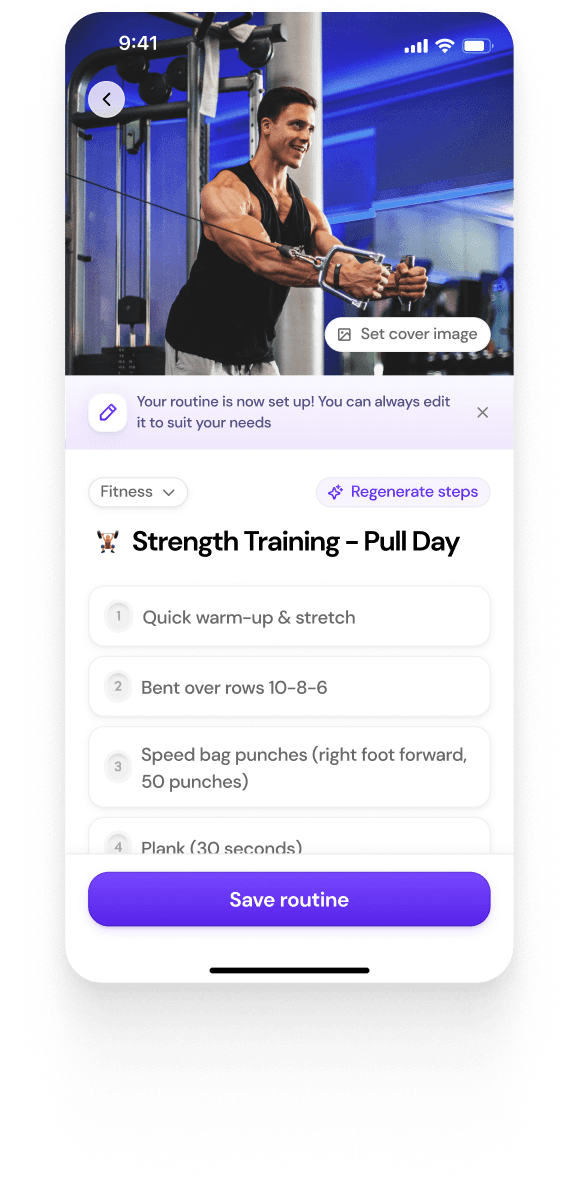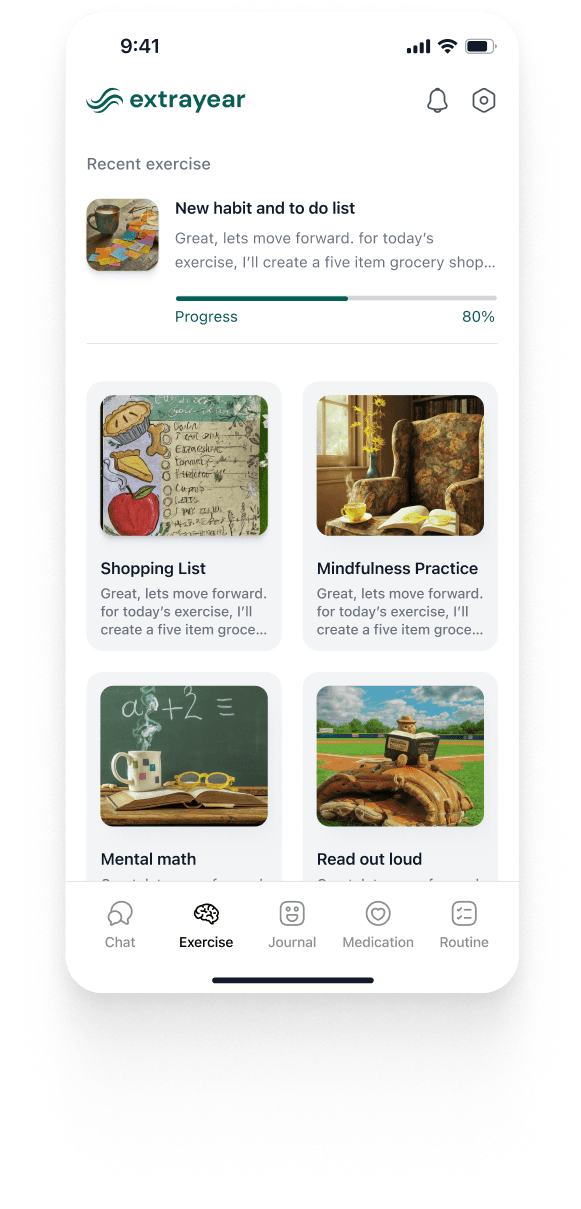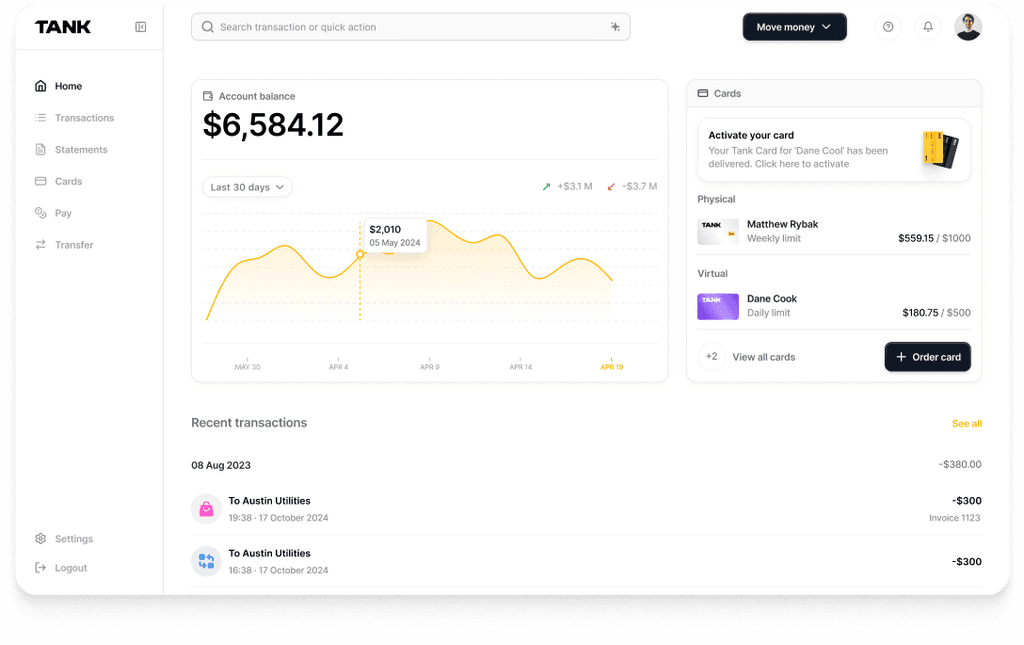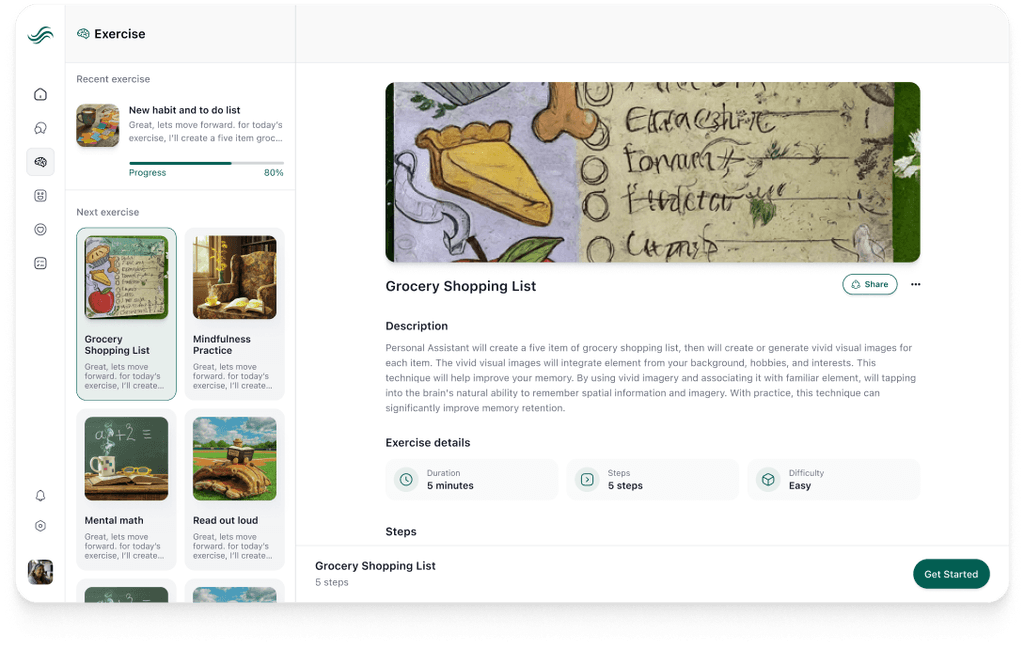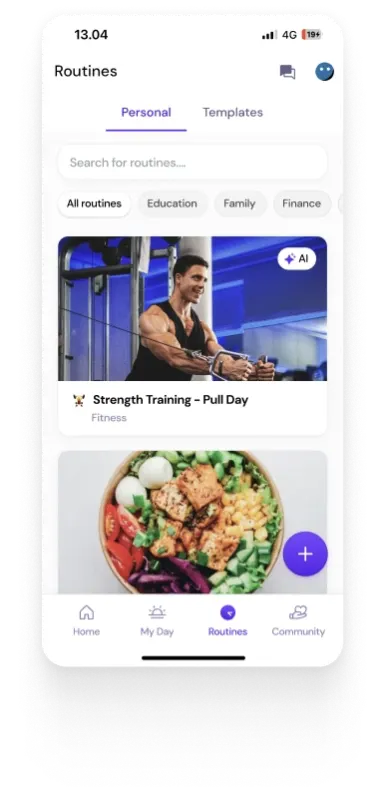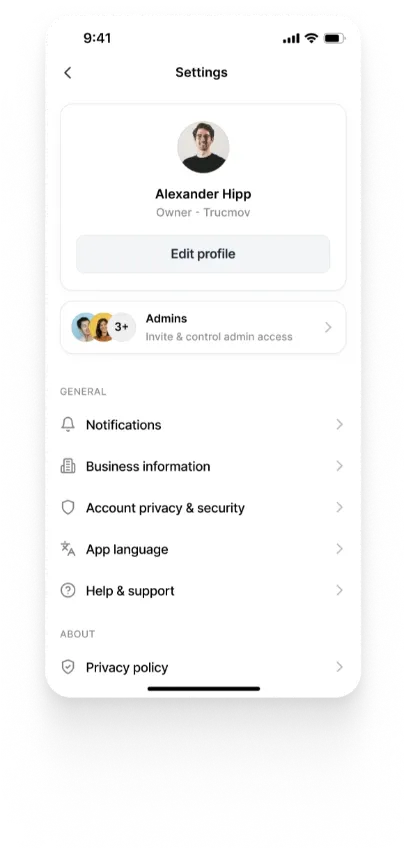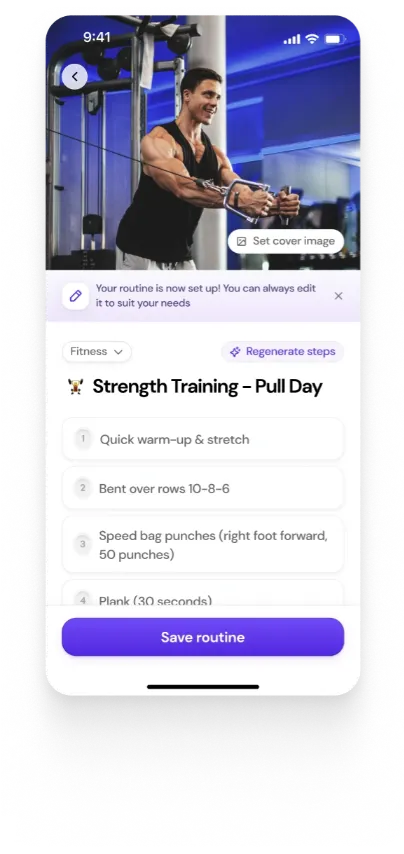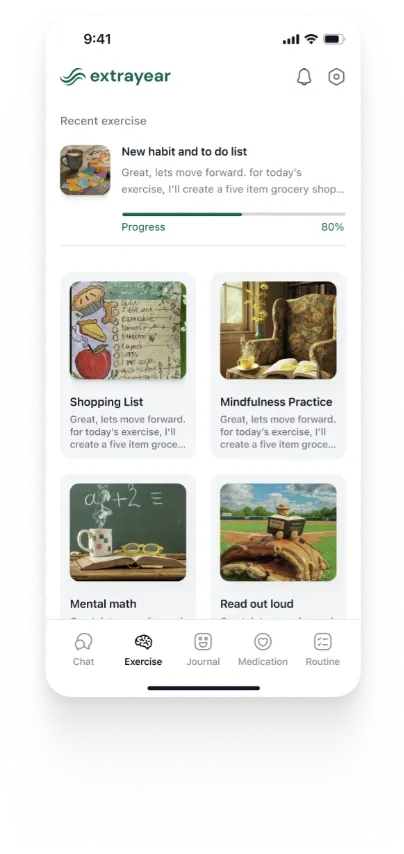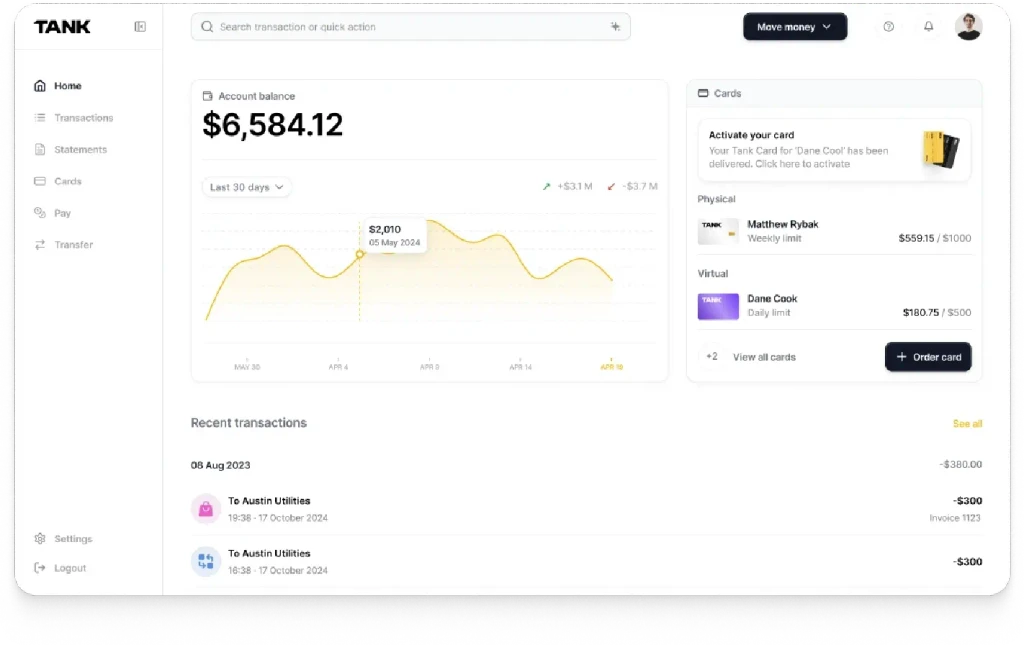Essential Terms Every Startup Founder Should Know
Summary
This insight provides a comprehensive overview of essential terms every startup founder should know. It covers key areas such as business fundamentals, investor relations, engineering, accounting, health insurance, office rentals, growth management, HR, compliance, business development, industry, and incubator-specific terminology. Familiarity with these terms will better prepare you to navigate the complexities of building a successful startup.
Key insights:
Investors: Understand the essential financial and investment terms to competently communicate with venture capitalists and angel investors, ensuring clear discussions on business operations.
Engineers: Learn technical jargon to collaborate smoothly with your development team, improving engagement and project outcomes.
Accountants: Familiarize yourself with essential accounting terms to manage finances and maintain financial solidity.
Product Management & Design: Master product and design terms to streamline product development and ensure seamless team collaboration.
HR & Compliance: Grasp human resource management and regulatory terms to ensure adherence to labor laws and company policies.
Health Insurance & Office Rental: Understand the basics of managing aspects like health insurance and office rentals for a well-functioning startup.
Sales & Growth: Get acquainted with important sales and marketing terms to better lead customer acquisition and grow the business.
Business Development: Build strategic partnerships and better supplier relations by mastering key terms in business development.
Introduction
Navigating the startup ecosystem necessitates a solid grasp of key terminology across various disciplines, including investment, finance, engineering, and product management. This guide provides startup founders with a comprehensive glossary of significant terms, each paired with concise explanations to enhance understanding. Organized into sections relevant to specific startup roles and functions, it also includes terminology from leading incubators and resources, ensuring well-rounded and easy-to-understand references for founders.
General Business Terms

These foundational terms are useful from the early stages of your startup through to scaling and growth.
1. GTM (Go-To-Market) Strategy
A Go-to-Market Strategy is a plan for how a company will launch its product to target customers, including marketing, sales, distribution, and pricing strategies. It aims to reach and engage the target market effectively and achieve market penetration. For startups, a well-defined go-to-market strategy is essential for successfully introducing products and gaining market share.
2. ARR (Annual Recurring Revenue)
ARR measures the expected revenue from recurring components such as subscriptions or contracts over a year. To calculate ARR, sum all recurring revenue items (such as subscription fees and membership dues), but exclude one-time payments. For monthly subscriptions, multiply the amount by 12 to determine the annual contribution. ARR provides a clear picture of a business’s recurring revenue and is important for financial planning in subscription-based models.
3. MRR (Monthly Recurring Revenue)
A key financial metric that represents the consistent, predictable revenue a company expects to earn each month from customers for providing ongoing products or services. It is widely used by subscription-based businesses, especially SaaS companies, to track revenue growth and forecast financial performance. MRR is not officially recognized by accounting standards but is commonly used by investors to assess company growth.
4. CAC (Customer Acquisition Cost)
The total cost of gaining a new customer, including marketing and sales expenses. To calculate CAC, divide the total sales and marketing costs by the number of new customers acquired during a specific period. This metric helps businesses evaluate their marketing efficiency and profitability, guiding improvements in ROI and cost management.
5. LTV (Lifetime Value)
Estimates the total revenue a customer will generate during their relationship with a company. Understanding LTV helps businesses assess customer acquisition costs, forecast future revenue, and identify valuable customer segments. By calculating LTV, companies can optimize their marketing strategies and resource allocation to enhance long-term profitability and growth.
6. Churn Rate
The percentage of users who stop using the service within a given period. A high churn rate can hinder growth and profitability as it indicates more customers are leaving than being acquired. Comparing churn rate with growth rate helps assess overall business performance and stability.
7. Burn Rate
The speed at which a company spends its cash reserves before becoming profitable. It is usually measured monthly, with gross burn referring to total operating costs and net burn indicating the net cash loss. The burn rate impacts the company’s financial runway, determining how long it can operate before running out of funds. A lower burn rate leads to a longer runway and is an indicator of efficient spending. A good burn rate recommendation is to have three to six months of expenses remaining.
8. Runway
Measures how long an early-stage startup can continue operating before exhausting its cash reserves given its current burn rate. To calculate it, divide the cash on hand by the monthly burn rate. A longer runway indicates a better cushion for securing additional funding or achieving profitability before running out of cash.
9. MVP (Minimum Viable Product)
An MVP, or Minimum Viable Product, is the earliest version of a product that solves a core problem for customers. It is designed to gather maximum validated learning about user needs with minimal effort. Unlike prototypes, MVPs are meant for external release to collect market feedback and validate assumptions.
10. PMF (Product-Market Fit)
Product-Market Fit (PMF) occurs when a product meets the needs of a large and growing market segment. Achieving PMF is often considered the most critical milestone for startups, as it demonstrates that there is demand for the product. Marc Andreessen introduced the concept of PMF to describe the stage where a startup experiences rapid customer adoption and positive feedback.
Startups that achieve PMF can focus on scaling, as the product has demonstrated clear market demand. Common indicators of PMF include high customer retention, word-of-mouth referrals, and positive user feedback.
11. Product Engineering
The process of developing customer-centric products by combining research, design, analytics, and engineering to meet market needs. This process is driven by agile methodologies, cross-functional collaboration, and data-informed decisions, making it a good approach for startups. Through continuous feedback and iterative development, product engineering provides a strategy to ensure customer satisfaction and business growth.
Investor / VC Terms

These terms are crucial during fundraising stages, particularly when interacting with venture capitalists and angel investors.
12. VC (Venture Capital)
A form of private equity that provides funding to startups and early-stage companies with high growth potential in exchange for equity. Venture capitalists offer financial support, strategic guidance, management expertise, and access to networks.
VC funding typically occurs in these stages: seed, early-stage (Series A/B/C), and late-stage (Series D and beyond). The objective of VC is to help startups scale and eventually achieve profitable exit through an acquisition or Initial Public Offering (IPO).
13. Angel Investor
An individual who provides initial seed funding for startups in exchange for equity ownership. These investors often come from the entrepreneur’s personal networks, such as family and friends, or are professionals looking for high-potential opportunities.
14. Term Sheet
A non-binding document that outlines the key terms and conditions of a potential investment between an entrepreneur and an investor. It typically offers two main aspects: economics (such as valuation, investment amount, and liquidation preference) and control (level of influence investors will have over business decisions).
The term sheet serves as the foundation for negotiations, helping both parties align on expectations before formal agreements are drafted. It is an essential step in securing funding for startups and ensuring mutual understanding between founders and investors.
15. IPO (Initial Public Offering)
The process of offering shares of a privately-owned company to the public for the first time, allowing general investors to buy stock. The process involves working with underwriters, typically investment banks, to set an initial share price and prepare the company for public trading.
16. Equity Ownership
The proportion of the total value of a company’s assets that can be claimed by its shareholders. This will be paid to the shareholders in the case of liquidation and can be calculated by deducting liabilities from assets. Equity also represents control, as it allows the shareholders to vote on certain decisions. Larger equity ownership means more control over the decision-making process. Startups typically offer equity to attract investors.
17. Valuation
The process of determining the current worth of a company (often in monetary terms). The valuation of a company may be influenced by several factors, including but not limited to the prospect of future earnings. An accurate portrayal of valuation is crucial to encouraging investor confidence and raising funds. Valuation also plays an important role in acquisitions and finance negotiations with banks.
18. Cap Table (Capitalization Table)
A summary of the current capitalization of a company. This details the ownership stakes of founders, investors, and employees. An up-to-date cap table allows accurate calculation of the diluting impact from each funding round. Startups often have fewer shareholders than larger firms, this allows for a transparent fundraising process.
19. Seed Funding
The initial capital raised by a startup to help it get off the ground. It is typically used for expenses like product development, hiring staff, and marketing. A seed fund is often sourced from angel investors or venture capitalists and plays an important role in sustaining early-stage growth before a company achieves profitability.
Seed funding rounds generally range between $500k and $2 million.
20. Series A/B/C Funding
Stages in the fundraising process for startups following seed funding. Series A focuses on optimizing Product Market Fit (PMF) and building a scalable business model. Series B funding helps the company expand its market reach, requiring larger investments to scale operations. Series C funding is suited for companies that are already successful and are looking for additional funds to expand into new markets, develop new products, or prepare for an IPO or acquisition.
21. Exit Strategy
A plan used by business owners, investors, or venture capitalists to liquidate their position in a business or investment once specific goals are met. It can be used to maximize profits from successful ventures through strategies like an IPO or acquisition, or to minimize losses from a failing business through methods like liquidation or bankruptcy.
Exit strategies are important for managing risk, guiding future decisions, and preparing for unexpected events. Common strategies include IPOs, acquisitions, mergers, and selling equity stakes.
22. Convertible Note
A short-term debt instrument used in startup financing, allowing investors to convert their loan into equity. Typically, this conversion occurs during the company’s Series A financing round. The key terms of a convertible note include the discount rate, valuation cap, interest rate, and maturity date which help investors assess the note’s value and potential return on investment. This allows startups to delay a valuation until enough data is available.
23. Dilution
The reduction in ownership percentage for existing shareholders when a company issues new shares. This can occur due to events like secondary stock offerings, exercising stock options, or issuing convertible securities. Dilution decreases the value of each share and often reduces the company’s earnings per share. However, the impact of dilution can be mitigated if the capital raised boosts company earnings significantly.
24. SAFE (Simple Agreement for Future Equity)
A contract where investors provide capital in exchange for the right to convert their investment into equity at a future financing round. It is popular for its simplicity, no interest, and lack of maturity date. It converts into preferred stock during equity financing, often including terms like valuation caps or discounts to account for early-stage investment risks. However, investors do not receive equity until a triggering event occurs.
25. Run Rate
A financial metric that estimates a company’s future performance by annualizing current data, assuming that the current conditions will continue. It is useful for companies that have been operating for a short time but can be misleading in seasonal industries or when there are one-time events.
26. Bridge Financing
A short-term loan used to cover immediate financial needs until a company secures long-term funding. It is often used to maintain operations or cover expenses. While it provides quick expenses, bridge loans typically have high interest rates, making them a costly option. In some cases, companies may offer equity instead of repaying the loan.
27. Due Diligence
The process of investigating, auditing, or reviewing a business or investment before entering into a transaction. It helps mitigate risks by confirming relevant facts, such as financial statements or legal compliance. Due diligence can be financial, legal, or operations, focusing on aspects like company performance, liabilities, and growth potential. It is essential to allow investors and businesses to make informed decisions.
28. Down Round
Occurs when a company’s valuation during a new investment round is lower than its valuation in previous rounds. This usually results from unmet milestones, increased competition, or economic downturns. In a down round, investors buy shares at a lower price, potentially diluting existing shareholders’ ownership.
29. Pro Rata Rights
Rights that allow an investor to maintain their percentage of ownership in a company during future financing rounds. These rights are common in venture capital and are often granted to early investors or those with significant influence in the company. However, investors may choose not to exercise these rights if the company requires a large additional investment.
30. Drag-Along Rights
Rights that allow majority owners to force minority shareholders to participate in the sale of a company, ensuring that all shares are sold under the same terms and conditions. This provision is usually triggered during mergers or acquisitions to give buyers 100% control. These rights prevent minority shareholders from blocking a sale, ensuring smoother transaction processes for the majority.
31. KPIs (Key Performance Indicators)
Measurable values used to assess a company’s success in achieving specific goals. They help track performance against set targets, industry standards, or past results. Common KPIs include revenue growth, customer retention, profit margin, and employee satisfaction. These metrics guide decision-making but require regular follow-ups.
32. ESOP (Employee Stock Ownership Plan)
A program that allows employees to own shares in the company they work for. It is often used for succession planning, providing a flexible way for business owners to sell their shares. Employees gain shares over time (vesting) and can sell them back at fair market value upon leaving, providing incentives to attract and retain talent.
33. Vesting Schedule
An incentive program set by employers to grant employees ownership of certain assets over time, often used for stock options or retirement benefits. It ensures employees gain full ownership of their allocated shares or benefits after meeting specific milestones such as remaining within the company for a certain period. Common types include time-based, milestone-based, or hybrid-vesting. Employees who leave early forfeit any unvested assets, further reinforcing the retention of talent.
Engineering Terms

Commonly encountered during the development phase, these terms help ensure effective communication within the technical team.
34. Pull Request
A method used in version control systems, such as GitHub, to propose changes to a codebase, particularly to merge changes from one branch to the other. It facilitates code review and collaboration, allowing team members to discuss and suggest modifications before merging changes into the main branch. Best practices include providing detailed descriptions and requesting peer reviews to ensure code quality.
35. Deployment
The process of making a software application available for use by transitioning it from development to production environments. It involves a series of activities including installation, configuration, and testing, with the goal of ensuring optimized functionality, security, and compatibility. Proper deployment is critical for delivering new features, fixing bugs, and maintaining system reliability while minimizing downtime and disruptions. Continuous deployment facilitates rapid iteration.
36. CI/CD (Continuous Integration/Continuous Deployment)
A software development practice that automates the process of building, testing, and deploying code. By integrating code changes continuously and automating deployment, CI/CD enables faster and more reliable software releases while minimizing downtime and errors. This approach is a key component of modern DevOps, promoting frequent updates and enhanced software quality. Popular CI/CD tools include Jenkins and GitLab.
37. Tech Stack
A collection of technologies layered together to build an end-to-end application. It typically includes different technologies for the frontend and backend, such as the MEAN, MERN, or LAMP stacks. The choice of tech stack depends on factors like application size, cost, and user experience and it is critical to choose the right one for scalability and maintainability.
38. API (Application Programming Interface)
A set of protocols that allows software applications to communicate and exchange data, services, or functionality. It simplifies development by enabling integration of external services without building them from scratch, while securely sharing only necessary data. API documentation provides instructions for developers to effectively use the API. Commonly used API standards include RESTful APIs and GraphQL.
39. Microservices
A cloud-native approach where an application is built from numerous loosely coupled, independently deployable services. Each microservice operates with its own technology stack and communicates through APIs, event streaming, or message brokers. This architecture allows for flexible development, independent scaling, and easier maintenance, as opposed to traditional monolithic systems. Several popular companies like Netflix and Amazon use microservices architectures.
40. Containerization
A method of packaging software with its necessary dependencies and libraries into a lightweight, portable unit called a container. This approach ensures that the application runs consistently across different computing environments and is scalable. Unlike virtual machines, containers share the host operating system’s kernel and are more resource-efficient. Docker, an industry-standard tool for containerization, simplifies this process by providing a universal packaging format that enhances development speed and application portability.
41. Version Control
A system that manages and records changes to files or sets of files over time, allowing users to track revisions, revert to previous versions, and review modifications. It is essential for maintaining historical records, facilitating collaboration, and recovering from errors in various types of projects, including software development and design. Git is perhaps the most widely used version control system.
42. Load Balancing
The process of distributing incoming network traffic across multiple servers to ensure efficient resource use, prevent server overloads, and maintain high application availability. It improves performance by directing user requests to the most suitable server, ensuring fast responses and minimizing downtime, especially in high-traffic environments such as e-commerce platforms or cloud-based applications. Examples of popular load balancing tools include NGINX and HAProxy.
43. Scalability
A system's capability to handle increasing workloads or demands by efficiently managing growth. It ensures that performance, efficiency, and reliability are maintained as the business, and in turn system, expands. Scalability can be achieved through vertical scaling, which involves upgrading a single server's resources, or horizontal scaling, which involves adding more servers to distribute the load.
44. Serverless
A cloud computing model where applications are built and run without the need for developers to manage underlying infrastructure. The cloud provider handles server provisioning, scaling, and maintenance, allowing developers to focus on writing code. Benefits include reduced operational overhead, automatic scaling, and cost-efficiency. Examples of serverless services include AWS Lambda and Google Cloud Functions.
45. Infrastructure as Code (IaC)
The practice of managing and provisioning computing infrastructure through machine-readable configuration files, rather than manual processes. It automates infrastructure management, enabling developers to quickly set up, update, and maintain environments, reducing errors and speeding up deployment. IaC allows environments to be duplicated across systems, ensuring consistency and reliability. Popular IaC tools include AWS CloudFormation and Terraform.
46. Latency
The delay in data transmission across a network because of packet travel time, impacting response times. Factors such as distance, network infrastructure, and congestion contribute to latency. Organizations can reduce latency by using content delivery networks (CDNs), edge computing, and up-to-date infrastructure, which improves user experience and productivity.
47. Bandwidth
The maximum amount of data that can be transmitted over a network in a given time period, usually measured in bits per second. A fast bandwidth is crucial to ensure efficient data transmission across devices, reducing delays and improving overall user experience. Fast bandwidth is achieved by upgrading network components, such as using high-speed switches instead of hubs, improving network infrastructure, and managing traffic through techniques like multicasting and Quality of Service (QoS) to prioritize essential data.
48. Throughput
The actual rate at which a system processes a certain volume of data within a specific time frame. High throughput signifies effective system performance. Strategies to enhance throughput include optimizing software, load balancing, and scaling infrastructure.
49. DevOps
A collaborative approach that integrates software development (Dev) and IT operations (Ops), aiming to improve the efficiency and quality of software delivery. It emphasizes automation, cross-team communication, and iterative improvement across the entire application lifecycle. Through practices like continuous integration and continuous deployment (CI/CD), and monitoring, DevOps enhances collaboration and streamlines processes, driving faster and more reliable deployments.
50. Agile
A flexible development methodology that emphasizes customer value, continuous improvement, and iterative progress. It breaks complex projects into smaller, manageable tasks completed in shorter cycles (sprints), allowing teams to adapt quickly to changing requirements. Agile promotes collaboration, regular feedback, and delivering customer value throughout the development process. Some Agile methodologies include Scrum and Kanban.
Accountant Terms

These terms are essential for managing finances and are typically used by accountants and financial analysts.
51. P&L (Profit and Loss Statement)
A financial report that summarizes a company’s revenues, expenses, and profit/loss over a given period. P&L statements also known as income statements, provide an insight into the company's profitability and performance. They include the revenue, operating expenses, gross, and net profit. The information can further be utilized to calculate other financial ratios like the Gross margin ratio. Lastly, the income statement provides an insight into the company’s handling of expenses.
52. Cash Flow
The movement of cash in and out of a business. This tracks the income, revenue, dividends, and any other means that lead to money entering the business including liabilities. It also similarly tracks all outflows including expenses and purchases. The figures are then subtracted to get the net cash flow. A positive figure represents good cash management while a negative figure signals the opposite.
Depreciation expenses are added back to the cash flow rather than subtracted because they are a cashless expense, meaning that depreciation does not lead to a cash outflow.
53. EBITDA (Earnings Before Interest, Taxes, Depreciation, and Amortization)
EBITDA which stands for Earnings Before Interest, Taxes, Depreciation, and Amortization, measures a company’s overall financial performance. This indicates the company’s core operational profitability excluding the effects of tax-policies and non-cash items like depreciation. Investors use it to assess the financial health of the startups and to compare them, however since it lacks several vital items, it is often used in conjunction with other reports like the profit and loss statement.
54. Balance Sheet
The balance sheet summarizes the assets, liabilities and equity of a business at a specific time. This is used to assess the financial health and the resource allocation of the business which also helps founders track the growth and funding sources of their business. The items can further be used to calculate further ratios like the current ratio.
55. Accrual Accounting
Accrual Accounting tracks revenue and expenses when they incur. Not waiting for the cash to be exchanged hence provides a more accurate portrayal of a company’s financial position by matching income and expenses to the period they occur in. It can however complicate cashflow management. GAAP (Generally Accepted Accounting Principles) recommend accrual accounting.
56. Depreciation
The process of allocating the cost of an asset over its useful life. This represents the gradual reduction in value of assets like machinery, vehicles and buildings due to wear and tear and obsolescence. For startups, depreciation helps spread large costs and reduces taxable income.
57. Accounts Receivable
Money owed to the business by its customers for goods or services bought on credit. It is listed as an asset on the balance sheet and indicates future cash inflows. Managing accounts receivable is essential to maintain proper cash flow and ensure timely payments. This is also crucial for sustaining operations.
58. Accounts Payable
Money a company owes to its suppliers for goods and services received on credit. It is listed as a liability on the balance sheet and represents short-term obligations. Efficient management of accounts payable helps startups maintain good suppliers. This is also crucial for maintaining effective cash flow.
59. Tax Liability
The total taxes a business owes to the government, including income tax, payroll tax, and sales tax. It appears as a liability on the balance sheet until paid. Understanding and maintaining tax liabilities is crucial to avoid penalties and ensure compliance.
60. Audit
An independent inspection of a company’s financial statements and records to ensure accuracy and compliance with proper accounting standards and regulations. This helps verify that financial reports are free from misstatements and provides assurance to investors and stakeholders. For startups, audits can enhance credibility and identify potential financial issues.
61. Gross Margin
The difference between revenue and the cost of goods sold, expressed as a percentage of revenue. It measures how efficiently a company produces and sells its products. For startups, a high gross margin indicates better profitability and cost management. This can be improved by various means including cost reduction and price optimization.
62. Net Income
The total profit a company makes after subtracting all expenses, including operating costs, interest, taxes, and other expenses from total revenue. This is the key indicator of a company’s profitability and overall financial performance. Tracking net income helps startups and other businesses assess long-term viability.
63. Amortization
The gradual reduction of an intangible asset’s cost or the gradual repayment of a loan’s principal over time. For assets like patents, amortization spreads out the expense, while for loans, it reduces the outstanding principal through regular payments. It helps manage expenses and understand the true costs of assets or liabilities.
64. Fiscal Year
A 12 month period used for accounting and financial reporting purposes, which may or may not align with the calendar year. This helps businesses plan and analyze performance over a consistent period of time. For startups, choosing a strategic fiscal year can impact tax planning and financial reporting.
Health Insurance Terms

These terms are necessary for understanding health insurance policies and benefits, often used when dealing with healthcare providers.
65. PPO (Preferred Provider Organization)
A type of health insurance plan that establishes a network of contracted medical providers, including hospitals and doctors, to offer healthcare services at reduced costs. Members typically pay lower fees when using providers within the plan's network but may also access services outside the network at an increased cost.
66. HMO (Health Maintenance Organization)
A type of health insurance plan that typically restricts coverage to services provided by doctors and healthcare professionals who are either employed by or have contracts with the HMO. Coverage for out-of-network care is generally excluded, except in emergencies. Eligibility may depend on residing or working within the HMO's service area. HMOs often emphasize integrated care, with a focus on preventive health and wellness services.
67. PCP (Primary Care Physician)
A medical doctor (MD) or doctor of osteopathic medicine (DO) who provides or coordinates a variety of health care services for a patient. They act as the first point of contact and can further refer you to specialists. Having a trusted PCP can improve your healthcare experiences.
68. Deductible
The amount you must pay for covered health care services before your insurance starts to contribute. For instance, if your deductible is $1,000, your plan will not pay for certain services until you have paid $1,000 out-of-pocket. Some services may be exempt from the deductible. Generally, plans with higher deductibles have lower premiums. When picking a deductible one must consider balancing upfront costs and overall health care needs.
69. Copayment
A fixed amount that an individual pays for a covered healthcare service after meeting their deductible. For example, if the allowable cost for a doctor's visit is $100 and the copayment is $20, the individual pays $20 if the deductible is met. Copayments can vary for different services, such as medications or specialist visits, and plans with lower premiums typically have higher copayments, while higher-premium plans tend to have lower copayments. Lower copayments can help minimize out-of-pocket costs for regular healthcare services.
70. Premium
The monthly amount you pay for health insurance. In addition to the premium, you may have other healthcare costs like deductibles, copayments, and coinsurance. While lower premiums may seem appealing, plans with slightly higher premiums but lower deductibles could save money if you require frequent care and more comprehensive coverage. After enrolling in a plan, the first premium is paid directly to the insurance company.
71. Out-of-Pocket Maximum
The highest amount a policyholder is required to pay during a policy period, typically one year, before the health insurance plan covers 100% of the allowed costs for covered services. This limit excludes premiums, balance-billed charges, and costs for services not covered by the plan. Certain expenses, such as co-payments, deductibles, and out-of-network costs, may not always be counted towards this maximum depending on the plan. Selecting a plan with a manageable out-of-pocket maximum can help safeguard against significant medical expenses.
72. Network
The facilities, providers, and suppliers with whom a health insurer or plan has established contracts to deliver healthcare services. Utilizing in-network providers generally results in reduced costs. Familiarity with your plan’s network can help you maximize your benefits.
73. EOB (Explanation of Benefits)
A document from your insurance provider that explains how your claim was processed. It includes details such as the services provided, the charges, what the insurance covered, and what you owe. While not a bill, it helps you understand how your insurance applies to your medical costs and can identify potential errors in billing. Keeping your EOB is important for reviewing your bills and ensuring you are receiving the correct benefits you are entitled to under your plan.
74. Referral
A written authorization from your primary care doctor to consult with a specialist or receive specific medical services. In many HMOs, obtaining a referral is necessary to access care from providers other than your primary care doctor. Without this referral, the plan may not cover the costs of the services.
75. Claim
A request for payment submitted by you or your healthcare provider to your health insurer for coverage of medical items or services received. Claims processing ensures that healthcare providers receive payment for their services. Familiarity with the claims process can assist in resolving or avoiding billing issues.
Office Rental Terms

These terms are essential when negotiating and managing office space leases, especially during the setup and expansion phases.
76. Lease Agreement
A legally-binding agreement where one party rents property from another. It guarantees the tenant use of the property and obligates regular payments to the landlord. The contract outlines essential details like rent, responsibilities, and consequences if terms are broken.
77. Security Deposit
The money given to a landlord before moving into a rental property as a guarantee against damages or losses caused by the tenant. If the tenant leaves the property in good condition, the deposit is refunded. Security deposits are often equal to one or two months’ rent and may be used to cover repair costs if the property is damaged during the tenant’s stay.
78. Rent
The cost a business pays to use a property, such as office or retail space, and is usually a fixed operating cost. It typically involves a contract for 1-2 years and may include additional charges such as property taxes and maintenance fees.
79. Common Area Maintenance (CAM)
The fees tenants pay on top of renting for maintaining shared spaces in commercial properties such as lobbies, elevators, and parking lots. These fees are distributed among tenants based on the proportion of space they occupy in the property. CAM charges can also include janitorial services, landscaping, and security. These expenses are typically calculated on an annual basis, then divided into monthly payments.
80. Triple Net Lease (NNN)
A commercial real estate agreement where tenants pay expenses like real estate taxes, insurance, and maintenance in addition to their rent. This arrangement lowers the base rent since the tenant assumes additional costs. While tenants gain control over maintenance and expenses, they also face the risk of cost increases, whereas landlords benefit from a stable revenue stream without having to manage those expenses.
81. Sublease
An arrangement where a tenant rents out their leased property to a third party, while still being responsible for the original lease with the landlord. Subleasing requires landlord approval and the original tenant still remains liable for rent and any damages. This arrangement allows the subtenant to occupy the property and pay rent to the original tenant, but they have no direct legal connection with the landlord.
82. Termination Clause
A termination clause in an office lease allows a tenant to end their lease early under specific conditions, such as financial difficulties or a shift in business needs. It may also contain the condition under which the landlord can legally terminate the lease early. This clause outlines the required notice period and associated fees, including potential early termination penalties. Clear terms in this clause can help prevent legal or financial complications, ensuring a smoother lease termination process.
83. Rent Escalation
A clause in a lease that outlines how and when rent increases over time. These increases are often necessary for landlords to keep pace with inflation and rising operating costs. Rent escalation can occur through a fixed percentage increase annually, or based on the Consumer Price Index (CPI). Some leases also tie rent escalation to increases in operating expenses such as property taxes and maintenance fees. Clauses often include caps to limit increases and may be negotiated as part of lease renewals to adjust rent to fair market value.
84. Tenant Improvements
Modifications made to a leased commercial property to meet the tenant’s business needs .These changes are often covered by the landlord through an agreed-upon allowance in the lease. If costs exceed the allowance, the tenant typically covers the extra, and any improvements remaining within the property when the lease ends.
85. Gross Lease
A lease agreement where the landlord covers expenses like maintenance, taxes, and insurance while the tenant only pays the fixed rent. This arrangement simplifies budgeting for the tenant but may result in higher rent.
86. Base Rent
The minimum amount a tenant must pay under a lease. Also referred to as fixed rent, it does not include additional expenses such as taxes or operating costs, which may be added separately through clauses.
87. Holdover Tenant
A tenant who remains in a property after their lease has expired. If the landlord accepts rent payments, the holdover tenant may stay, potentially under a month-to-month arrangement or renewed lease. If the landlord rejects further rent, the tenant is considered trespassing and may face eviction.
88. Right of First Refusal
A Right of First Refusal gives the potential buyer the first opportunity to to purchase a property before the owner can negotiate with other buyers. This agreement is commonly offered to tenants who want the option to buy their rental property. The buyer can match or negotiate offers, but if they decline, the owner is free to sell to others.
Growth Manager Terms

These terms are frequently used in growth marketing and customer acquisition strategies, essential for scaling your business.
89. User Acquisition
The process of gaining new users for an app, platform, or service. It plays an important role in business success by driving installs and optimizing app discovery. This is typically achieved through paid or organic advertising campaigns.
90. Churn Rate
The percentage of users who stop using the service within a given period. A high churn rate can hinder growth and profitability as it indicates more customers are leaving than being acquired. Comparing churn rate with growth rate helps assess overall business performance and stability.
91. Retention Rate
The percentage of customers that continue using a company’s products or services over a specified period. It is calculated by subtracting new customers from the ending customer count, then dividing by the beginning customer count. A high retention rate indicates customer loyalty, while low rate points to higher customer churn.
92. Conversion Rate
The percentage of users who completed a desired action such as clicking an ad or installing an app. It is calculated by dividing the number of users who convert by the total audience exposed to the ad and multiplying by 100. Conversion rates help marketers determine the success of campaigns and identify areas that require improvement.
93. Growth Hacking
A strategy that aims to rapidly grow and retain a user base by using resource efficient, data-driven tactics. It combines marketing, optimization, and development techniques to drive scalable growth at low costs, relying on constant testing and iteration to find effective strategies for user acquisition and retention.
94. A/B Testing
A method of comparing two versions of a product feature or design element to determine which performs better for a specific goal based on user engagement or other key metrics. It involves showing half of the audience the original (A) and the other half a modified version (B). By conducting A/B tests, Product Managers can make data-driven decisions to optimize product features, validate assumptions, and improve user experience. This approach allows for incremental enhancements and better strategic planning throughout the product lifecycle. Google Optimize and Optimizely are commonly used tools.
95. Customer Segmentation
The practice of dividing customers into distinct groups based on shared characteristics such as demographics, behaviors, or preferences. This allows businesses to tailor marketing and sales strategies to specific segments, improving customer engagement, loyalty, and profitability by delivering more personalized experiences. It helps in targeting the right audience more effectively which can help achieve higher sales and revenue.
96. Market Penetration
Measures how much of a product or service is used by customers compared to the total potential market. It can involve strategies to increase market share such as lowering prices, introducing new products, or expanding to new regions. Companies use market penetration strategies to grow their customer base and sales.
97. Loan-to-Value LTV Ratio
Measures the amount of a loan relative to the value of the asset being purchased. Lenders use it to assess the risk of a loan, with a higher LTV indicating more risk. The LTV is calculated by dividing the loan amount by the asset’s value.
98. Viral Coefficient
Measures the number of new users generated by referrals from existing customers. It is calculated by dividing the number of new users from referrals by the number of total customers. A coefficient above 1 indicates exponential growth potential.
99. Net Promoter Score (NPS)
Measures customer loyalty based on the customer’s likelihood to recommend a product or service to their friends and colleagues. Customers are categorized into promoters, passives, and detractors based on their responses. To calculate NPS, subtract the percentage of detractors from the percentage of promoters. This score helps businesses understand overall customer satisfaction and identify areas for improvement.
HR Terms

These terms are crucial for managing your workforce, from hiring to compliance with labor laws.
100. Employee Retention
An organization’s ability to maintain its workforce over time and minimize turnover. To effectively retain employees, organizations should implement strategies such as offering competitive compensation, providing opportunities for career development, fostering a positive work environment, and recognizing employee achievements. By adopting these practices, companies can enhance job satisfaction and loyalty, reducing the likelihood of top talent leaving the organization.
101. Employee Turnover
The percentage of employees leaving an organization over a specified period. It is a key metric for assessing the effectiveness of HR policies and work culture. High turnover can lead to increased costs and lower team morale. Analyzing turnover rates helps businesses improve employee retention and make strategic changes.
102. Onboarding
The structured process of introducing new employees to an organization, integrating them into its culture, and equipping them with the necessary tools for success. This process typically includes completing legal paperwork, defining roles, and ensuring continuous progress checks throughout the onboarding period. A successful onboarding strategy revolves around the five key elements: compliance (ensuring adherence to company policies), clarification (clearly defining roles and expectations), culture (introducing the company’s values and mission), connections (facilitating introductions to key team members), and check back (ongoing follow-ups to monitor progress). While onboarding programs vary, the most effective ones extend throughout an employee’s first year, with the final stage involving regular feedback, performance goal setting, and continuous support.
103. Offboarding
The structured process a company follows when an employee departs, ensuring a smooth transition and an amicable separation. This process typically includes transferring knowledge, securing company assets, and maintaining compliance with legal and data policies. Offboarding is essential for preserving productivity, avoiding legal risks, and fostering positive post-employment relationships, potentially turning former employees into brand ambassadors. A well-structured offboarding process often includes a detailed checklist and an exit interview, which can provide critical feedback to improve company culture, retention, and productivity.
104. Payroll
The process of compensating employees, including calculating wages, withholding taxes, and issuing payments. It involves tracking work hours, calculating gross pay, deducting taxes and benefits, and issuing payments through direct deposit or checks. Effective payroll management ensures legal compliance, accurate payments, and streamlined operations. Best practices include using software or outsourcing, maintaining detailed records, and ensuring timely payment to avoid penalties and maintain employee trust. Automated payroll systems like ADP and Paychex are popular, with ADP catering to businesses of all sizes and Paychex being a leading provider for small and medium-sized businesses.
105. Benefits Package
A non-wage compensation package that includes extras like health insurance, retirement savings plans, paid time off (PTO) and other fringe benefits. It is designed to attract and retain top talent while boosting productivity and engagement. Best practices for crafting benefits packages involve ensuring they are tailored to employees’ needs, affordable for the business, and communicated effectively. Employers must also comply with legal requirements for benefits such as Family and Medical Leave Act (FMLA) and Consolidated Omnibus Budget Reconciliation Act (COBRA). Offering valued benefits not only improves retention but also fosters a more productive and engaged workforce.
106. Employee Handbook
An document that outlines company procedures, policies, values, and programs like sick leave and travel reimbursement. It provides clear descriptions of each policy, with links to more detailed documents if necessary. While not an employment contract (and it should be clearly stated as not), it clarifies employee guidelines in an easily understandable format. The handbook is a living document, meant to be updated as needed. Employers may want to set an internal review standard, such as every two years, and also keep it up to date whenever there are changes in the law that impacts the content of the handbook.
107. Performance Review
A structured evaluation process where managers provide feedback on an employee's past performance and outline future expectations. Regular reviews, typically every 6-12 months, motivate employees, guide career development, and boost engagement. Effective reviews should recognize accomplishments, offer constructive feedback, and establish clear follow-up steps. Common performance ratings might be on a 5-point scale and reviews often include a self-assessment, a 1:1 conversation with a supervisor, and a development or improvement plan to support ongoing growth.
108. Talent Acquisition
A strategic process focused on identifying, evaluating, and hiring candidates who align with a company's long-term goals. It emphasizes building high-performing teams by sourcing top-tier talent through a curated approach, involving stages like sourcing, interviewing, and hiring. Unlike traditional recruitment, talent acquisition prioritizes quality over quantity to ensure sustained organizational growth and employee retention. Utilizing platforms like LinkedIn and Indeed to acquire talent online streamlines the process.
109. Diversity and Inclusion
Workplace initiatives aimed at integrating diverse perspectives, ensuring fair treatment, and fostering a sense of belonging for all employees. You may also hear diversity and inclusion be referred to as D&I, DNI / DnI, DE&I, or DEI, the ‘E’ standing for equity. Implementing DEI effectively requires investing in diversity initiatives, offering bias training, promoting pay equity, and developing talent from underrepresented groups. Benefits include enhanced employee morale, increased innovation, and improved business outcomes such as higher revenue growth and better retention rates.
110. HRIS (Human Resources Information System)
A centralized software platform used to manage and track employee data, including payroll, performance, and training. It streamlines HR operations by organizing personnel information, ensuring regulatory compliance, and enhancing the employee experience through direct access to information. Workday, BambooHR, and ClickUp are popular HRIS platforms.
111. Compensation
Total compensation refers to the comprehensive package of remuneration provided to employees, encompassing not only their base salary or hourly wage but also fringe benefits such as health insurance, retirement plans, paid time off, and bonuses or commissions. It represents the overall financial value of an employee’s remuneration, offering a complete picture of the total value of their employment package. Equitable compensation practices help attract and retain talent. Regular market salary reviews ensure that compensation remains competitive.
Compliance Terms

Compliance with legal and regulatory standards is crucial for avoiding fines and ensuring smooth operations.
112. SOC 2 (System and Organization Controls 2)
An audit framework developed by the American Institute of Certified Public Accountants (AICPA) to assess the controls related to data security, availability, processing integrity, confidentiality, and privacy in service organizations. It ensures that an organization has implemented robust practices to protect customer data and meet regulatory and contractual obligations. SOC 2 reports are critical for verifying a service provider’s adherence to established standards for managing sensitive information and can enhance customer trust.
113. HIPAA (Health Insurance Portability and Accountability Act)
A US federal law enacted in 1996 to establish national standards for protecting the privacy and security of Protected Health Information (PHI). It applies to healthcare providers, health plans, and any third parties handling PHI. HIPAA compliance involves implementing key rules such as the Privacy Rule, Security Rule, and Breach Notification Rule, conducting regular risk assessments, and enforcing security measures. Non-compliance can lead to substantial fines, legal consequences, and a loss of trust from patients.
114. GDPR (General Data Protection Regulation)
A comprehensive European Union (EU) law that governs the processing and protection of personal data, and it applies to any company in the world with EU customers. It requires organizations to gain specific, informed, and freely given consent from data subjects, implement data protection by design and by default, and follow strict protocols for data breach notifications. Additionally, organizations must appoint Data Protection Officers (DPOs) where necessary and face severe penalties for non-compliance. Compliance with GDPR protects individual privacy and enhances organizational trust.
115. PCI DSS (Payment Card Industry Data Security Standard)
Technical and operational requirements established by the PCI Security Standards Council to protect cardholder data. They apply to all entities involved in storing, processing, or transmitting cardholder information, and compliance is enforced by the Council's founding members: American Express, Discover, JCB, MasterCard, and Visa Inc. Adhering to these standards reduces the risk of data breaches and fines.
116. ISO/IEC 27001
A globally recognized standard for information security management systems (ISMS), published by the International Organization for Standardization (ISO) and the International Electrotechnical Commission (IEC). It outlines the requirements for establishing, implementing, maintaining, and improving information security practices. It helps organizations of all sizes manage risks related to data security and ensures adherence to best practices. The standard promotes a comprehensive approach to information security, encompassing people, policies, and technology, thereby enhancing risk management and cyber resilience. Hence, obtaining this certification demonstrates a commitment to data security.
117. FCPA (Foreign Corrupt Practices Act)
A US law enacted in 1977 that prohibits US companies and individuals from bribing foreign officials to secure business advantages. It encompasses two key provisions: anti-bribery measures and requirements for accurate accounting and internal controls. The FCPA applies worldwide and covers both publicly traded and privately held companies in the US.
118. AML (Anti-Money Laundering)
Laws, regulations, and procedures designed to detect and prevent the concealment of illicitly obtained money. It targets the disguising of funds from criminal activities such as drug trafficking, tax evasion, and terrorism financing, impacting governments, financial institutions, and individuals globally. Financial institutions are supposed to comply with the AML regulations in the US, and implementing these policies reduces legal as well as reputational risks.
119. KYC (Know Your Customer)
The process financial institutions use to verify the identity of new customers and ensure their funds come from legitimate sources. It aims to prevent financial crimes like money laundering by scrutinizing customer identities against high-risk lists and detecting potential illicit activity at the initial stage of depositing funds. It includes three key steps: collecting basic customer information (CIP), evaluating the customer’s risk level (CDD), and conducting deeper checks for high-risk individuals (EDD). KYC is critical for any successful compliance and risk management program, and automation of KYC processes can improve efficiency and accuracy.
120. CCPA (California Consumer Privacy Act)
A 2018 statute, effective from 2020, grants California residents robust privacy rights, including access to, deletion of, and opting out of the sale of their personal data. It applies to any for-profit entities processing the data of California residents and meeting specific criteria, such as annual revenues over $25 million or handling data of over 100,000 residents. The act mandates clear privacy notices, responsive data management systems, and robust security measures. Amendments under the California Privacy Rights Act (CPRA) in 2023 expanded consumer rights and imposed further restrictions on data usage, with significant penalties for non-compliance, including statutory damages up to $750 per consumer per incident.
121. Data Breach
A security incident where unauthorized parties access, use, or disclose sensitive or confidential information, such as personal or corporate data. This can lead to significant damages, including financial losses averaging millions per breach and potential fines. Different regulations require different responses to data breaches in order to remain compliant. Effective solutions include deploying data security tools, incident response plans, AI and automation, employee training, and robust identity and access management.
Business Development Terms

These terms are essential for building strategic partnerships and expanding your business.
122. Partnership Agreement
A formal contract between business partners outlining the responsibilities, roles, profit/loss sharing arrangements and dispute resolution methods. This helps prevent conflicts and ensure smooth operation by defining how decisions are taken and how profits and losses are distributed. A clear partnership agreement is crucial for startup founders to establish the right expectations and legal protection.
123. Joint Venture
A business arrangement where two or more parties collaborate on a specific project. They share the resources, risks, and profits, which effectively mitigate the risks associated with new markets or products. Unlike a partnership, a joint venture is typically limited to a single project or business objective. For startups, joint ventures can provide access to new markets, technologies or expertise while reducing the risks and costs involved.
124. Strategic Alliance
A partnership between businesses to achieve specific goals while remaining independent. Unlike joint ventures, strategic alliances do not involve creating a new business but focus on working together in areas such as marketing, technology, or distribution. This could provide startups with access to new markets, resources, and expertise.
125. Market Expansion
Market expansion involves entering new markets to grow a company’s customer base. This could include expanding to new regions, targeting new customer segments, or introducing new products. Market expansion, for startups, is crucial for scaling and increasing market share, but it requires careful planning and resources. This also increases the competition a business faces.
126. Channel Partner
A third party that collaborates with an a business to sell its products or services, often through distribution, resale, or marketing. Channel partners help extend market reach and drive sales by leveraging their networks and expertise. Startups can enhance market penetration and accelerate growth with effective channel partners.
127. Business Model
A model that describes how a company creates, delivers, and captures value. This outlines its strategy for generating revenue and profit. It includes elements like target customers, value propositions, revenue streams, and cost structures. For startups, a business model can guide operations, attract investors, and ensure long-term sustainability.
128. Competitive Analysis
Competitive analysis involves understanding the strengths, weaknesses, strategies, and market positions of competitors. This helps the business identify opportunities and threats. Startups find it crucial to position their products effectively and develop strategies to gain a competitive advantage.
129. Go-to-Market Strategy
A plan for how a company will launch its product to target customers, including marketing, sales, distribution, and pricing strategies. It aims to reach and engage the target market effectively and achieve market penetration. For startups, a well-defined go-to-market strategy is essential for successfully introducing products and gaining market share.
130. Revenue Stream
A source of income for a business, generated by selling a product, service, or other offering. It defines how a company earns money from its customer base. Identifying sustainable revenue streams is crucial for long-term financial success
131. Customer Relationship Management (CRM)
A strategy and software system for managing a company’s interactions with current and potential customers. It helps businesses improve relationships, enhance customer satisfaction, and drive sales. Startups can benefit immensely from CRM systems to foster growth
132. Demo Day
An event where startups present their business ideas, products, or services to potential investors. It typically marks the end of an accelerator or incubator program. For startups, Demo Day is a chance to showcase their progress, attract funding, and build valuable connections.
133. Mentorship
Mentorship refers to a more experienced individual providing guidance, advice, and support to help a less experienced person grow professionally and personally. In startups, mentorship can offer valuable insights and strategic advice.
134. Cohort
A group of startups that start a program, project, or course together and progress through it as a unit. This often includes participants in an accelerator or incubator program who share resources and experiences. This leads to new connections, collaboration and mutual support among the members.
135. Pitch Deck
A presentation used by startups to provide an overview of their business, including the problem, solution, and intended market. It is often used to attract investors and a compelling pitch deck is crucial for gaining investor confidence.
136. Funding Round
A phase where startups raise capital from investors to support their growth. Each round such as seed, series A, or series B corresponds to different stages of a company’s development and involves various types of investors. Funding rounds help startups secure the necessary capital to scale.
137. Accelerator
A program designed to provide support to early-stage startups through mentorship, resources, and funding over a fixed period. This often lasts a few months and helps accelerate the growth by providing networking opportunities. Startups can gain visibility by joining an accelerator.
138. Incubator
A program designed to help early stage startups by providing mentorship, office space, and networking opportunities. Incubators help businesses develop their ideas and grow without taking equity. They focus on guiding startups to achieve sustainability and success.
139. Equity Stake
An equity stake refers to ownership in a company, typically expressed as a percentage. It is the portion of the company’s shares that an investor holds. Equity stakes entitle holders to receiving dividends and, sometimes, to voting rights. Startups often offer equity stakes to attract investors.
140. Non-Dilutive Funding
Capital received by a company that does not require it to give up equity. This type of financing includes grants, loans, and certain types of other financing. For startups, this is valuable as it allows them to raise capital while retaining full ownership and control of the company.
141. Term Sheet
A non-binding document that outlines the terms and conditions of an investment. It includes details such as the valuation, equity stake, and investor rights. Startups use term sheets to serve as a foundation for negotiations.
Terms Used within the US Fintech Industry

These terms are essential for startups operating in the financial technology sector, which includes innovations in payment processing, banking, and financial services.
142. Blockchain
A decentralized, distributed ledger system that stores information in blocks, linked together cryptographically. It ensures data immutability, meaning once data is added to a block, it cannot be altered or deleted.
Commonly used in cryptocurrency transactions, blockchains eliminate the need for intermediaries, as all participating nodes maintain a synchronized copy of the ledger. This technology provides transparency, security, and efficiency.
143. Cryptocurrency
A form of digital or virtual currency secured by cryptography. Operating on decentralized networks, most cryptocurrencies use blockchain technology to ensure secure and transparent transactions without relying on a central authority.
While this structure allows for more efficient transactions and financial independence, cryptocurrencies are highly volatile, energy-intensive, and sometimes associated with criminal activity. Key cryptocurrencies include Bitcoin and Ethereum.
144. KYC (Know Your Customer)
The process financial institutions use to verify the identity of new customers and ensure their funds come from legitimate sources. It aims to prevent financial crimes like money laundering by scrutinizing customer identities against high-risk lists and detecting potential illicit activity at the initial stage of depositing funds. It includes three key steps: collecting basic customer information (CIP), evaluating the customer’s risk level (CDD), and conducting deeper checks for high-risk individuals (EDD). KYC is critical for any successful compliance and risk management program, and automation of KYC processes can improve efficiency and accuracy.
145. AML (Anti-Money Laundering)
Regulations and procedures designed to prevent the concealment of illicit funds within the financial system. AML processes include monitoring customer activity, reporting suspicious transactions, and implementing Know Your Customer (KYC) and Customer Due Diligence (CDD) protocols. These steps help detect and prevent money laundering, financing of terrorism, and other financial crimes.
146. RegTech (Regulatory Technology)
Technology used to manage regulatory processes within the financial industry, primarily focusing on monitoring, reporting, and ensuring compliance. It leverages tools like big data and machine learning to streamline tasks such as fraud detection and customer due diligence. RegTech helps financial institutions reduce costs, increase efficiency, and comply with evolving regulations.
147. Payment Gateway
A service that allows merchants to accept payments from customers usually through credit and debit cards. It facilitates the transfer of payment information from the customer to the merchant’s acquiring bank for processing. Payment gateways are distinct from payment processors, which handle the actual transfer of funds. Examples include platforms like Square or Stripe.
148. Robo-Advisor
Automated investment platforms that create and manage portfolios based on user preferences such as risk tolerance, time horizon, and financial goals. By using algorithms, they adjust portfolios as market conditions change, offering benefits like low fees, automatic rebalancing, and tax-loss harvesting. They often offer a cost-effective alternative to traditional financial advisors while providing various levels of human advisor support depending on the service.
149. P2P Lending (Peer-to-Peer Lending)
A system where individuals or businesses borrow money directly from other individuals without the involvement of traditional financial institutions. Transactions are generally facilitated through online platforms that connect borrowers with lenders. While P2P lending often offers higher returns to investors and lower interest rates for borrowers, it carries higher credit risks and lacks government protections or insurance against borrower defaults.
150. Smart Contract
Self-executing program that automatically enforced agreements between two parties on a blockchain. It runs once specified conditions are met, ensuring trust and eliminating the need for intermediaries. Smart contracts can enhance efficiency, accuracy, and immutability but come with risks like irreversibility of errors and reliance on the programmer’s accuracy. They are widely applicable including in transaction, supply chains, and real estate deals.
151. InsurTech (Insurance Technology)
The use of technology to enhance the traditional insurance industry by increasing efficiency and reducing costs. It uses tools like data analysis, IoT, AI, and automation to offer more personalized insurance options, improve claims processing, and streamline underwriting.
InsurTech emphasizes customer engagement by offering customized, flexible policies through digital platforms while also aiming to reduce fraud and operational costs through advanced data management. However, it faces regulatory challenges and privacy concerns.
Terms Used within the US Healthcare Industry

These terms are essential for startups operating in the healthcare sector, which includes medical services, health information technology, and pharmaceutical innovation.
152. Interoperability
The capability of disparate health information systems to exchange and effectively use data. Achieving interoperability through the adoption and optimization of electronic health records (EHRs) and health information exchange (HIE) services enhances care coordination, improves health outcomes, and reduces costs by enabling simultaneous, secure information access across multiple locations. HL7 FHIR (Fast Healthcare Interoperability Resources) is a modern health data exchange standard that uses web technologies to enable efficient, real-time interoperability and simpler application development.
153. EHR (Electronic Health Record)
A real-time, patient-centered digital record that provides secure, instant access to a patient’s comprehensive medical history, treatment plans, and test results to authorized useres, like a digital version of a patient’s paper chart. EHRs enhance care delivery by integrating clinical data, streamlining provider workflows, and supporting evidence-based decision-making. It increases interoperability with other systems.
154. Telemedicine
The use of electronic information and communications technologies to provide and support healthcare across distances. It includes a range of applications from simple telephone consultations to advanced technologies like telesurgery and interactive video conferencing, enabling real-time diagnostics, therapy, and broader applications in education, research, and administration. With this expansion in access, providers must make sure they are still compliant with state and federal regulations.
155. HIPAA (Health Insurance Portability and Accountability Act)
A US federal law enacted in 1996 to establish national standards for protecting the privacy and security of Protected Health Information (PHI). It applies to healthcare providers, health plans, and any third parties handling PHI. HIPAA compliance involves implementing key rules such as the Privacy Rule, Security Rule, and Breach Notification Rule, conducting regular risk assessments, and enforcing security measures. Non-compliance can lead to substantial fines, legal consequences, and a loss of trust from patients.
156. FDA (Food and Drug Administration)
The US federal agency responsible for safeguarding public health by ensuring the safety, efficacy, and security of human and veterinary drugs, biological products, medical devices, the food supply, cosmetics, and radiation-emitting products. These and many more products require FDA approval to be released. Additionally, the FDA provides science-based health information to the public.
157. Clinical Trial
A research study where volunteers help answer specific health questions by following a detailed protocol outlining participant criteria, test schedules, drug dosages, and study objectives. Clinical trials can be used to evaluate the safety and effectiveness of new treatments, explore improved methods for existing therapies, and determine the best ways to use treatments for different populations. Good Clinical Practice (GCP) guidelines ensure that clinical trials are conducted ethically and safely, protecting participants and maintaining the integrity of the data collected.
158. Health IT (Health Information Technology)
The electronic systems used by healthcare professionals and patients to store, share, and analyze health information. It includes tools such as electronic health records (EHRs), personal health records (PHRs), and e-prescribing systems, all of which contribute to more efficient, coordinated, and secure care while enhancing patient outcomes and reducing costs. Making these systems secure and interoperable is critical.
159. ICD-10 (International Classification of Diseases, 10th Revision)
A medical coding system used by physicians to classify and code diagnoses, symptoms, and procedures for claims processing. Developed by the World Health Organization, the US version was adapted by the Centers for Medicare & Medicaid Services (CMS) and the National Center for Health Statistics (NCHS) to better fit the US healthcare system. Following this code accurately would be essential for reimbursement and statistical purposes.
160. Value-Based Care
Unlike traditional fee-for-service models, which pay based on the volume of services provided, value-based care ties payment to the quality of outcomes, promoting evidence-based, preventive care, and better coordination among healthcare professionals. Value-based care focuses on achieving five key goals: enhancing patient experience, advancing health equity, improving health outcomes, delivering cost-effective services, and supporting healthcare workers’ well-being. A high-value healthcare system includes a patient-centered vision, skilled leadership, strong IT infrastructure, broad access, and quality-focused payment arrangements.
161. PHR (Personal Health Record)
An electronic application that allows individuals to securely manage and monitor their health information, incorporating data from various sources. Unlike electronic medical records, PHRs are separate and intended to help individuals actively engage in their own health management.
Terms Used within the US Education Industry including Special Education

These terms are essential for startups operating in the education sector, including innovations in e-learning, educational technology, and special education services.
162. LMS (Learning Management System)
A digital platform used by schools, colleges, and universities to manage and deliver course content, track student progress, and facilitate communication between teachers and students. It allows educators to create assignments and learning modules that students can access online. With features like grading, feedback, and class discussions, LMS can enhance the learning experience by providing a centralized hub for educational resources.
163. IEP (Individualized Education Program)
The IEP process involves a collaborative effort between parents, educators, specialists, and the student. Throughout this process, various forms and documents are required to comply with regulations.
164. Blended Learning
An educational approach that combines both in-person classroom methods and online learning. It allows learners to access online materials while also participating in face-to-face sessions.
165. MOOCs (Massive Open Online Courses)
Online courses designed to provide flexible and accessible learning opportunities to anyone worldwide. MOOCs cover a wide array of subjects such as computer science, business, health, and more - allowing learners to advance their skills, prepare for college, or pursue lifelong learning. They are utilized for career development, corporate eLearning, and offer a scalable way to deliver quality education to a large number of people.
166. EdTech (Educational Technology)
The use of technology in education through tools like software and digital platforms to enhance teaching and learning. It helps personalize education, improve assessments, and streamline classroom management.
167. STEM (Science, Technology, Engineering, and Mathematics)
STEM education includes Science, Technology, Engineering, and Mathematics. It aims to foster critical thinking, problem solving, and innovation skills across various subjects.
168. 504 Plan
A plan designed to provide students with disabilities equal access to education by offering necessary accommodations in their learning environment. Unlike an IEP, which involves specialized instruction, the 504 Plan ensures accessibility and support without altering the general education curriculum. It is updated annually to meet the student’s specific needs.
169. Adaptive Learning
An educational method that uses data-driven technology to tailor learning experiences based on individual student needs. By analyzing performance and engagement, it personalizes content, sequence, and assessments - allowing students to learn at their own pace. This method enhances engagement, provides timely feedback, and supports equitable education by addressing diverse learning paths.
170. Flipped Classroom
An educational strategy that reverses the traditional learning model by having students engage with instructional content at home. This frees up class time for interactive activities that promote higher-order thinking. It encourages self-paced learning, increased responsibility, and collaboration while allowing instructors to provide more personalized support during class. The focus is on applying knowledge rather than simply delivering content.
171. Assistive Technology
Devices and services that help individuals with disabilities improve their functioning in areas like mobility, communication, and self-care. These tools can be physical, such as hearing aids, or digital, such as speech recognition software. Assistive technology aims to enhance inclusivity, allowing users to participate fully in society and live independently.
Terms Used in AI, GenAI, LLMs

These terms are essential for startups operating in the artificial intelligence sector, including innovations in machine learning, generative AI, and large language models.
172. AI (Artificial Intelligence)
Advanced computer systems designed to replicate human cognitive functions, such as understanding language, making decisions, and learning from experience. These systems use algorithms to process vast amounts of data, enabling them to automate tasks that typically require human intelligence. Thinking about transparency and ethical use of AI is essential.
173. Machine Learning (ML)
A subset of AI focused on teaching computers to recognize patterns and make predictions based on data. By repeatedly processing data with algorithms, ML systems improve their accuracy and performance over time, solving complex problems that traditional programming techniques might not address effectively. High-quality data is necessary to effectively utilize ML algorithms.
174. Deep Learning
A subset of machine learning that uses deep neural networks composed of multiple layers to automatically recognize patterns in data and generate outputs, such as predictions or decisions. Inspired by the structure of neurons in animal brains, deep learning is effective for complex tasks like image and speech recognition, forming the foundation for technologies such as voice assistants and autonomous vehicles. Training deep learning models requires significant resources.
175. Natural Language Processing (NLP)
A subfield of AI that utilizes computer algorithms to analyze and generate human speech and text. It involves identifying linguistic patterns and structures to understand and produce meaningful language, and is used in applications such as speech recognition, chatbots, automatic translation, and sentiment analysis.
176. Generative Adversarial Networks (GANs)
A machine learning technique used to generate realistic data, such as deepfake images, by employing two competing components: a generator and a discriminator. The generator produces synthetic data, while the discriminator evaluates its authenticity against real training data and provides feedback. This iterative process enhances the generator's ability to create increasingly realistic data until it becomes indistinguishable from genuine examples.
177. Reinforcement Learning (RL)
A machine learning approach where an agent learns to make decisions by interacting with an environment to maximize cumulative rewards. Unlike supervised learning, RL relies on trial and error, where the agent receives feedback in the form of rewards or penalties based on its actions, guiding it toward optimal behavior in complex and uncertain scenarios. These reward structures must be efficient to improve RL outcomes.
178. Large Language Models (LLMs)
Sophisticated AI systems that use machine learning to understand and generate human-like text. Based on neural networks mimicking the human brain, LLMs are trained on extensive text datasets to perform tasks such as translation, summarization, and conversational responses, often fine-tuned through reinforcement learning to enhance their conversational quality. Data diversity and ethical use are crucial to consider for LLM applications. GPT-4 and BERT are common examples.
179. Transfer Learning
A machine learning technique that leverages pre-trained models from one task to enhance performance on a related but different task. By applying knowledge gained from a source task to a target task, it improves generalization and reduces the need for extensive retraining. This approach is particularly valuable in deep learning, where it helps overcome the challenges of limited data.
180. Explainable AI (XAI)
Methods and processes that enable users to understand and trust the results of machine learning algorithms. It involves making AI systems transparent and interpretable, allowing users and stakeholders to comprehend how decisions are made. This is crucial in fields like healthcare and finance for facilitating decision-making and meeting regulatory requirements.
181. Federated Learning
A decentralized machine learning approach where models are trained collaboratively across multiple devices or servers while keeping data localized and private. Instead of aggregating data in a central location, federated learning processes data at its source, enhancing privacy and compliance with data protection regulations. This technique allows models to benefit from diverse datasets without compromising data security. Successful federated learning requires coordination of updates across devices.
182. Retrieval-Augmented Generation (RAG)
A system that improves the accuracy of language models by integrating real-time data from external sources to enhance the quality and relevance of AI-generated outputs.
183. Convolutional Neural Network (CNN)
A deep learning model designed to process data with a grid-like topology such as images. It uses convolutional layers to automatically extract features like edges, shapes, and objects from input data. It is primarily used for image classification and object recognition.
184. Recurrent Neural Network (RNN)
A deep learning model designed to handle sequential data by retaining memory of previous inputs to improve prediction accuracy. It processes inputs step-by-step and uses its internal memory (recurrent connections) to make predictions making it useful for tasks like speech recognition, language translation, and time-series predictions.
185. Hallucinations
In AI, hallucinations occur when a model generates outputs that are nonsensical or inaccurate based on patterns or data that do not exist in reality. This can result from model overfitting, biased data, or issues with complex model structures.
Terms Used in Product Management

These terms are crucial for managing the product development lifecycle, from ideation to launch and beyond.
186. Roadmap
A strategic plan that outlines the vision, priorities, and progress of a product over time. It helps align cross-functional teams by setting goals and milestones, defining key initiatives, and estimating timelines for delivery. Product roadmaps are essential for tracking progress, coordinating efforts, and ensuring stakeholders are informed. As market conditions, user needs, and product insights evolve, the roadmap should be regularly updated and reviewed to stay relevant and effective, ensuring it remains a dynamic guide for achieving product goals.
187. Agile
A flexible development methodology that emphasizes customer value, continuous improvement, and iterative progress. It breaks complex projects into smaller, manageable tasks completed in shorter cycles (sprints), allowing teams to adapt quickly to changing requirements. Agile promotes collaboration, regular feedback, and delivering customer value throughout the development process. Some Agile methodologies include Scrum and Kanban.
188. User Stories
An informal, high-level description of a software feature from the perspective of an end user. It outlines how the feature will provide value to the customer by focusing on desired outcomes rather than technical specifics. User stories facilitate user-centered design and agile development by promoting collaboration, creativity, and alignment with customer needs, ultimately contributing to a more effective and relevant product.
189. Sprint
A set period, typically lasting one to four weeks, during which a product team works to complete specific tasks or features for review. It is a core practice in Agile development, focusing on delivering incremental, usable improvements to the product.
190. Backlog
A prioritized list of tasks, including features, enhancements, and bug fixes, essential to be completed by the development team for shipping a product. It helps teams stay organized by focusing on high-value tasks and ensuring alignment with business and customer needs. Regular refinement ensures the backlog remains relevant and manageable.
191. Scrum
A framework within Agile software development that focuses on flexibility and iterative progress. It empowers teams with autonomy to solve problems using their skills and technical knowledge, facilitating adaptive problem-solving and continuous improvement through structured, time-bound work cycles known as sprints. Scrum includes roles such as the Scrum Master, Product Owner, and Development Team. Common practices include daily stand-ups and sprint reviews.
192. Feature Creep
The continuous addition of new features or functionalities to a product beyond the original specifications, delaying project timelines and increasing costs. This often results in scope creep, where the product becomes overly complex and deviates from its initial goals, potentially affecting its user-friendliness and overall value. Common causes include shifting stakeholder demands or an unclear product vision. To prevent feature creep, define clear product goals, prioritize essential features, set scope boundaries, gather continuous feedback, and regularly review project progress and constraints.
193. User Persona
Also known as product personas, they are detailed, fictional representations of ideal users created based on research and real data. They embody the characteristics, behaviors, and needs of different user segments to guide design and development processes. By providing a clear, relatable picture of target users, personas help ensure that products are tailored to address real user needs and preferences, fostering a more user-centered approach throughout the product lifecycle and improving product-market fit.
194. Acceptance Criteria
The conditions that a feature or product must fulfill before it is deemed complete. They provide a clear set of requirements defined by the Product Manager and serve as a communication tool among stakeholders, ensuring alignment and reducing the risk of rework. Essential for both Agile and non-Agile environments, well-defined Acceptance Criteria help prevent misunderstandings, enhance product quality, and ensure that the final product meets user needs. Acceptance criteria should be created early in the Product Development process, ideally during the planning phase, and should be iterated over throughout the development cycle.
195. Product Lifecycle
The five stages a product experiences from its initial development to its eventual decline: Development, Introduction, Growth, Maturity, and Decline. Recognizing these stages enables Product Managers to strategically adapt their approach, address unique challenges, and optimize product success throughout its lifespan.
Terms Used in Product Design

These terms are essential for creating user-centric designs that meet business goals and user needs.
196. User Experience (UX)
The overall experience and satisfaction a user has when interacting with a product. It encompasses how easy, intuitive, and enjoyable the product is to use, aiming to ensure that users can accomplish their tasks efficiently and with minimal frustration.
197. User Interface (UI)
The space where a user interacts with a digital device or product. User Interface (UI) design focuses on the overall look and feel of digital products, crafting visually appealing and interactive elements to enhance user experiences. UI designers apply usability and interaction design principles to create intuitive and engaging interfaces, including buttons, icons, menus, and navigation elements. By leveraging user psychology, UI design aims to build an emotional connection with users, ensuring effective communication between humans and technology through screens and interactive features.
198. Wireframe
A basic visual guide used in the design process to outline the structure and functionality of a website or app. It includes elements such as screen layouts, navigation bars, and interactive components. There are three types of wireframes: low-fidelity (basic layout), mid-fidelity (detailed with annotations), and high-fidelity (includes visual design elements). Wireframes help teams focus on functionality and user flow, improve alignment among stakeholders, and provide a foundation for iterative design and user feedback.
199. Mockup
A high-fidelity representation of a product’s design and layout, which can be created either on paper or using digital tools. It provides a visual preview of the user interface, allowing teams to assess and refine design concepts before finalizing the UI and facilitating early stakeholder feedback.
200. Prototype
An early, often experimental version of a product used to test functionality and refine design concepts. It helps validate ideas and gather user feedback before incurring the costs of full-scale development, and can also serve as a valuable tool for demonstrating the product to potential investors and stakeholders. Tools like Figma and InVision are popular when creating prototypes of websites and apps.
201. Usability Testing
A methodical practice used to evaluate the ease of use and effectiveness of a design by observing a representative group of users as they interact with the product. This process typically involves monitoring users as they complete specific tasks, identifying any issues or difficulties they encounter. Usability testing is conducted iteratively throughout the design and development phases, from early stages to the product’s final release, to ensure that the design meets user needs and expectations.
202. Responsive Design
A design approach that ensures a product adapts seamlessly to various devices, screen sizes, and orientations. It maintains consistent and uniform functionality and appearance across all devices, providing an optimal user experience regardless of the platform.
203. Design System
A comprehensive set of standards that includes reusable components, design principles, and guidelines to ensure consistency and efficiency across a company's digital products. It streamlines workflows, enhances collaboration, and maintains brand identity, providing a unified approach to design and development. Design systems facilitate scalable, cohesive digital experiences and are crucial for creating consistent and effective user interfaces. Google’s Material Design and IBM’s Carbon Design System are good examples.
204. A/B Testing
A method of comparing two versions of a product feature or design element to determine which performs better for a specific goal based on user engagement or other key metrics. It involves showing half of the audience the original (A) and the other half a modified version (B). By conducting A/B tests, Product Managers can make data-driven decisions to optimize product features, validate assumptions, and improve user experience. This approach allows for incremental enhancements and better strategic planning throughout the product lifecycle. Google Optimize and Optimizely are commonly used tools.
205. Accessibility
The ease with which a product can be used by all individuals, including those with disabilities. It involves designing products to accommodate diverse user needs, ensuring that everyone can interact with them effectively. Following standards such as ADA (Americans with Disabilities Act) and WCAG (Web Content Accessibility Guidelines) ensures that products meet legal and best practice requirements for accessibility.
Stocks & Equity Terms

These terms are fundamental for understanding the mechanics of stock ownership and equity distribution in startups.
206. Common Stock
Represents the ownership in a company and gives shareholders rights to vote on corporate matters and share in the company’s profits, typically through dividends. In case of liquidation, common stakeholders are last to be compensated. Some companies issue different classes of common stock, where certain shares may have limited or no voting rights but share equal profit rights.
207. Preferred Stock
Type of equity that gives holders priority over common shareholders for dividends and assets in case of liquidation. Types of preferred stock include cumulative (unpaid dividends accumulate) and convertible (can be exchanged for common stock). Preferred stocks are less volatile than common stock and receive higher dividends but have generally limited potential for price appreciation.
208. Stock Options
Financial contract granting the buyer the right, but not the obligation, to buy (call option) or sell (put option) a stock at an exercise price (strike price) within a specific period. Call options increase in value when the stock price rises, while put options gain value when the stock price falls. Stock options can be American-style (allowing exercise before expiration) or European-style (exercised only at expiration).
209. Exercise Price
Also called the strike price, the fixed price at which the holder of an option can buy or sell the underlying asset. It is known when the option is initiated and determines whether the option is profitable, based on the current market price of the asset.
210. Restricted Stock Units (RSUs)
Form of employee compensation where stock shares are granted but require vesting over time or based on meeting specific milestones. RSUs do not hold tangible value until they vest, at which point they are converted into actual shares. Upon vesting, they are taxed as ordinary income, with a portion of shares withheld to cover tax obligations. Employees can then choose to sell or hold the remaining shares.
211. 409A Valuation
An independent assessment of a private company’s common stock, typically used to set the exercise price for employee stock options in a tax-compliant manner. It ensures that the exercise price is no lower than the stock’s fair market value on the grant date, preventing tax penalties. This valuation is refreshed annually or after significant company events and is essential for offering equity to employees without immediate tax implications.
Foreign Entrepreneurs in the US

These terms are crucial for foreign entrepreneurs navigating US immigration and visa processes.
212. O1 Visa
A non-immigrant visa for individuals with extraordinary ability in fields such as science, art, education, business, athletics, or those with notable achievements in the motion picture and television industry. Applicants must demonstrate national or international acclaim and come to the U.S. to continue working in their area of expertise.
213. EB2 NIW (National Interest Waiver)
The EB2 NIW allows individuals with advanced degrees or exceptional abilities to apply for U.S. permanent residency without a job offer if their work benefits the U.S. The waiver is granted based on the merit and national importance of the applicant’s work, their ability to advance the endeavor, and whether it is beneficial to waive the job offer requirement.
214. E2 Visa
The E2 Visa allows nationals of treaty countries to enter the U.S. by investing a substantial amount of capital in a U.S. business. It also applied to certain employees of the investor of the qualifying organization. Eligibility requires that the investor holds nationality from a treaty country and makes a significant investment.
215. OPT (Optional Practical Training)
Allows F-1 students to work temporarily in the U.S. in jobs directly related to their major field of study. It provides up to 12 months of employment authorization, either before (pre-completion) or after (post-completion) the completion of studies.
216. STEM OPT
The STEM OPT extension allows F-1 students with degrees in Science, Technology, Engineering, or Mathematics to apply for a 24-month extension of their post-completion OPT. This extension enables eligible students to work in their field of study for an additional period, provided they meet specific requirements, including being employed by an E-Verify enrolled employer.
217. H-1B Visa
A non-immigrant visa that allows U.S. employers to hire foreign workers in speciality occupations requiring specialized knowledge and at least a bachelor’s degree or equivalent. Employers must ensure they pay wages equal to or greater than those paid to U.S. workers in similar positions to protect both U.S. and H-1B workers.
218. Cap Gap
The Cap Gap occurs when an F-1 student’s OPT employment authorization expires before the start of their H-1B employment. The Cap Gap extension allows these students to extend their F-1 status and current employment authorization if they have an approved H-1B petition filed in a timely manner. This extension bridges the gap between the expiration of OPT and the start of H-1B employment.
219. Form I-129
Used by U.S. employers to petition for nonimmigrant workers to come to the United States temporarily to perform services or receive training. It covers various visa categories including H-1B and O-1. Employers can also use this form to request an extension of stay or change of status for the worker.
220. Form I-797
Used by United States Citizenship and Immigration Services (USCIS) to communicate with applicants or petitioners regarding their immigration cases. It is not a form to be filled out by applicants. Different versions of I-797 serve different purposes, such as acknowledging the receipt of applications, approving petitions, requesting additional documents, or providing transportation letters for overseas travel.
221. Green Card
A Green Card, officially known as a Permanent Resident Card, allows individuals to live and work permanently in the United States. The application process and eligibility requirements vary depending on the individual’s immigration status.
Conclusion
In conclusion, mastering essential terminology across important areas like investment, engineering, finance, and product management is critical for startup founders. This knowledge enables effective communication with stakeholders and teams, and allows informed decisions to be made across multiple business areas. Familiarity with these terms not only increases efficiency but also prepares founders to navigate challenges in building and scaling startups. With these key concepts, founders can position their startups for growth, compliance, and long-term success in an increasingly competitive market.
Authors
Start, Scale, and Succeed with Walturn
Walturn is your partner through every phase of your startup journey. From idea to launch, we provide the tools and expertise to help you succeed. With our Product Engineering as a Service, you can build innovative, scalable products that drive your startup’s growth and success.
References
“About Pull Requests - GitHub Docs.” GitHub Docs, docs.github.com/en/pull-requests/collaborating-with-pull-requests/proposing-changes-to-your-work-with-pull-requests/about-pull-requests.
“Adaptive Learning.” Montclair, www.montclair.edu/itds/digital-pedagogy/pedagogical-strategies-and-practices/adaptive-learning.
Ahmed, Abdullah. “A Comprehensive Guide to IEP Documents and Process - Walturn Insight.” Walturn, 2 June 2024, www.walturn.com/insights/a-comprehensive-guide-to-iep-documents-and-process.
---. “A Deep Dive Into the RAGStack for GenAI - Walturn Insight.” Walturn, 21 Mar. 2024, www.walturn.com/insights/a-deep-dive-into-the-ragstack-for-genai.
---. “Developing Customer-Centric Products Through Product Engineering - Walturn Insight.” Walturn, 25 May 2024, www.walturn.com/insights/developing-customer-centric-products-through-product-engineering.
---. “GDPR Essentials: A Quick Guide for Businesses - Walturn Insight.” Walturn, 15 July 2024, www.walturn.com/insights/gdpr-essentials-a-quick-guide-for-businesses.
---. “HIPAA Compliance - a Comprehensive Guide for Healthcare Organizations - Walturn Insight.” Walturn, 16 May 2024, www.walturn.com/insights/hipaa-compliance-understanding-and-mitigating-risks-in-healthcare-data-privacy.
---. “SOC 2 Explained: Reports, Benefits, and Differences From HIPAA, FERPA, and COPPA - Walturn Insight.” Walturn, 1 May 2024, www.walturn.com/insights/soc-2-explained-reports-benefits-and-differences-from-hipaa-ferpa-and-coppa.
Ahmed, Faizan. “35 Common Product Design Terms You Need to Know - UX Design World.” UX Design World, 23 May 2024, uxdworld.com/list-of-35-common-product-design-terms-you-need-to-know.
American Medical Association and American Medical Association. “What Is Value-based Care?” American Medical Association, 20 Aug. 2024, www.ama-assn.org/practice-management/payment-delivery-models/what-value-based-care.
Arc. “The Founder’s Guide to Startup Funding Rounds in 2024 | Arc.” Arc, 3 Oct. 2023, www.joinarc.com/guides/funding-round.
Ashford, Kate. “What Is an IPO?” Forbes Advisor, 31 July 2024, www.forbes.com/advisor/investing/initial-public-offering-ipo.
Atlassian. “What Is DevOps? | Atlassian.” Atlassian, www.atlassian.com/devops.
Baldridge, Rebecca. “Understanding Venture Capital.” Forbes Advisor, 31 July 2024, www.forbes.com/advisor/investing/venture-capital.
Base Rent | Practical Law. content.next.westlaw.com/practical-law/document/I0f9fe83eef0811e28578f7ccc38dcbee/Base-Rent.
“Basics About Clinical Trials.” U.S. Food & Drug Administration, www.fda.gov/patients/clinical-trials-what-patients-need-know/basics-about-clinical-trials.
Benefits of EHRs | HealthIT.gov. www.healthit.gov/topic/health-it-and-health-information-exchange-basics/benefits-ehrs.
Catalano, Don. The Early Termination Clause: Can You End an Office Lease Early? www.ioptimizerealty.com/blog/the-early-termination-clause-can-you-end-an-office-lease-early.
Channel Partners Definition and Meaning | PartnerStack. partnerstack.com/glossary/channel-partners.
Chase, J. P. Morgan. What Is Right of First Refusal? 19 Oct. 2022, www.chase.com/personal/mortgage/education/owning-a-home/right-of-first-refusal.
Crail, Chauncey. “15 Effective Employee Retention Strategies in 2024.” Forbes Advisor, 1 May 2024, www.forbes.com/advisor/business/employee-retention-strategies.
---. “Offboarding: Definition and Best Practices.” Forbes Advisor, 17 Apr. 2024, www.forbes.com/advisor/business/offboarding.
---. “The Onboarding Process: A Step-By-Step Guide.” Forbes Advisor, 28 May 2024, www.forbes.com/advisor/business/onboarding-process.
“Data science and AI glossary.” The Alan Turing Institute, www.turing.ac.uk/news/data-science-and-ai-glossary.
“DEI: What It Is and How to Champion It in the Workplace.” Business Insights Blog, 3 Oct. 2023, online.hbs.edu/blog/post/what-is-dei.
DNI in Practice - What Are the Benefits of a Diverse and Inclusive Workplace? | Blue Colibri. www.bluecolibriapp.com/blog/dni-in-practice.
Dow Jones. “Understanding the ‘Know Your Customer’ (KYC) Process | Dow Jones.” Dow Jones Professional, 30 Apr. 2024, www.dowjones.com/professional/risk/glossary/know-your-customer.
“E-2 Treaty Investors | USCIS.” USCIS, 29 July 2024, www.uscis.gov/working-in-the-united-states/temporary-workers/e-2-treaty-investors.
“Employment-Based Immigration: Second Preference EB-2 | USCIS.” USCIS, 20 Apr. 2022, www.uscis.gov/working-in-the-united-states/permanent-workers/employment-based-immigration-second-preference-eb-2.
“Explanation of Benefits (EOB).” University of Utah Health | University of Utah Health, 1 June 2023, healthcare.utah.edu/bill/eob-explanation-benefits.
“Extension of Post Completion Optional Practical Training (OPT) and F-1 Status for Eligible Students Under the H-1B Cap-Gap Regulations | USCIS.” USCIS, 27 Aug. 2024, www.uscis.gov/working-in-the-united-states/temporary-workers/h-1b-specialty-occupations/extension-of-post-completion-optional-practical-training-opt-and-f-1-status-for-eligible-students.
Field, Marilyn J. “Introduction and Background.” Telemedicine - NCBI Bookshelf, 1996, www.ncbi.nlm.nih.gov/books/NBK45440.
“Financial Terms A-Z.” Investopedia, 10 Sept. 2019, www.investopedia.com/financial-term-dictionary-4769738.
“Flipped Classrooms.” Derek Bok Center, Harvard University, bokcenter.harvard.edu/flipped-classrooms.
“Form I-797: Types and Functions | USCIS.” USCIS, 29 July 2022, www.uscis.gov/forms/filing-guidance/form-i-797-types-and-functions.
GeeksforGeeks. “Difference Between Bandwidth and Throughput.” GeeksforGeeks, 30 Aug. 2024, www.geeksforgeeks.org/difference-between-bandwidth-and-throughput.
---. “Reinforcement Learning.” GeeksforGeeks, 4 Sept. 2024, www.geeksforgeeks.org/what-is-reinforcement-learning.
---. “Software Deployment in Software Development.” GeeksforGeeks, 9 Feb. 2024, www.geeksforgeeks.org/software-deployment-in-software-development.
---. “What Is Feature Creep in Product Management?” GeeksforGeeks, 30 Apr. 2024, www.geeksforgeeks.org/what-is-feature-creep-in-product-management.
---. “What Is Scalability and How to Achieve It?” GeeksforGeeks, 6 Mar. 2024, www.geeksforgeeks.org/what-is-scalability.
Git - About Version Control. git-scm.com/book/en/v2/Getting-Started-About-Version-Control.
GitLab. “What Is CI/CD? | GitLab.” GitLab, 13 Apr. 2023, about.gitlab.com/topics/ci-cd/#ci-cd-explained.
“Glossary.” HealthCare.gov, www.healthcare.gov/glossary.
“Good Clinical Practice.” U.S. Food & Drug Administration, www.fda.gov/about-fda/center-drug-evaluation-and-research-cder/good-clinical-practice.
Gravelle, Lian. “Employee Stock Ownership Plans (ESOPs): A Comprehensive Guide.” Employee Stock Ownership Plans (ESOPs): A Comprehensive Guide, 2016, www.wcl.american.edu/academics/experientialedu/clinical/theclinics/elc/tlcc/for-businesses-nonprofits/esops-info-sheet.
“Green Card.” USCIS, 11 July 2022, www.uscis.gov/green-card.
“Gross Lease.” LII / Legal Information Institute, www.law.cornell.edu/wex/gross_lease.
GrowthMentor. “What Is a Demo Day ? | GrowthMentor Glossary.” GrowthMentor, 17 Jan. 2023, www.growthmentor.com/glossary/demo-day.
“A Guide to Seed Fundraising : YC Startup Library | Y Combinator.” YC Startup Library, www.ycombinator.com/library/4A-a-guide-to-seed-fundraising.
“H-1B Program.” DOL, www.dol.gov/agencies/whd/immigration/h1b.
Haan, Katherine. “Employee Benefits in 2024: The Ultimate Guide.” Forbes Advisor, 1 May 2024, www.forbes.com/advisor/business/employee-benefits.
Health IT Playbook. www.healthit.gov/playbook/glossary.
Hennigan, Laura. “What Is Talent Acquisition? Everything You Need to Know.” Forbes Advisor, 17 Apr. 2024, www.forbes.com/advisor/business/what-is-talent-acquisition.
“How to Create a Term Sheet for Investors | HBS Online.” Business Insights Blog, 1 Aug. 2023, online.hbs.edu/blog/post/term-sheet-for-investors.
“How to Create Product Personas + Examples.” Product School, productschool.com/blog/user-experience/product-persona.
“ICD-10.” American Medical Association, 18 Dec. 2023, www.ama-assn.org/topics/icd-10.
“ISO/IEC 27001:2022.” ISO, www.iso.org/standard/27001.
Iwuozor, John. “ADP Vs. Paychex (2024 Comparison).” Forbes Advisor, 25 Apr. 2024, www.forbes.com/advisor/business/software/adp-vs-paychex-comparison.
Jolaoso, Christiana. “Customer Segmentation: The Ultimate Guide.” Forbes Advisor, 14 June 2024, www.forbes.com/advisor/business/customer-segmentation.
Kim, Justin. “Capitalization Table.” Wall Street Prep, 25 Feb. 2024, www.wallstreetprep.com/knowledge/the-ultimate-guide-to-capitalization-tables.
---. “Cash Runway.” Wall Street Prep, 5 Dec. 2023, www.wallstreetprep.com/knowledge/cash-runway.
---. “Common Area Maintenance (CAM).” Wall Street Prep, 20 Feb. 2024, www.wallstreetprep.com/knowledge/common-area-maintenance-cam.
---. “Retention Rate.” Wall Street Prep, 12 Aug. 2024, www.wallstreetprep.com/knowledge/retention-rate.
---. “Tenant Improvement (TI).” Wall Street Prep, 20 Feb. 2024, www.wallstreetprep.com/knowledge/tenant-improvement-ti.
Lager, Carl. “Non Dilutive Funding: A New Way to Fund a Tech Company.” Gilion, 28 June 2024, www.gilion.com/basics/non-dilutive-funding.
Laurinavicius, Tomas. “Performance Review Template and Examples (2024).” Forbes Advisor, 1 May 2024, www.forbes.com/advisor/business/performance-review.
Leonard, Kimberlee. “Best HRIS Systems of 2024.” Forbes Advisor, 27 Aug. 2024, www.forbes.com/advisor/business/software/hris-systems/#:~:text=A%20human%20resource%20information%20system,training%20modules%20and%20talent%20acquisition.
“Lifetime Value (LTV).” ProductPlan, 16 Dec. 2021, www.productplan.com/glossary/lifetime-value.
Martineau, Kim. “What Is Federated Learning?” IBM Research, 18 Aug. 2023, research.ibm.com/blog/what-is-federated-learning.
McGarry, Olivia. “What Is Blended Learning?” LearnUpon, 31 July 2024, www.learnupon.com/blog/what-is-blended-learning.
Medleva, Valerie. “Equity Stake.” Capital Com SV Investments Limited, 6 Mar. 2018, capital.com/equity-stake-definition.
“Microsoft Source: 10 AI Terms Everyone Should Know - 10 AI Terms.” 10 AI Terms, 29 Nov. 2023, news.microsoft.com/10-ai-terms.
Miranda, Dana. “Partnership Agreement: What Is It and Do You Need One?” Forbes Advisor, 18 June 2024, www.forbes.com/advisor/business/partnership-agreement.
Mohta, Bhavicka. “A Deep-Dive Into Product-Market Fit - Walturn Insight.” Walturn, 16 Aug. 2024, www.walturn.com/insights/a-deep-dive-into-product-market-fit.
---. “Accessible Web Products: A Comprehensive Guide to WCAG 2.1 - Walturn Insight.” Walturn, 5 July 2024, www.walturn.com/insights/accessible-web-products-a-comprehensive-guide-to-wcag-2-1.
---. “The Product Development Journey: From Discovery to Launch - Walturn Insight.” Walturn, 17 July 2024, www.walturn.com/insights/the-product-development-journey-from-discovery-to-launch.
---. “Understanding ADA Requirements for Web and Mobile Content - Walturn Insight.” Walturn, 15 July 2024, www.walturn.com/insights/understanding-ada-requirements-for-web-and-mobile-content.
---. “Understanding CCPA: A Deep Dive Into California’s Data Privacy Legislation - Walturn Insight.” Walturn, 16 July 2024, www.walturn.com/insights/understanding-ccpa-a-deep-dive-into-california-s-data-privacy-legislation.
MongoDB. “What Is a Technology Stack? Tech Stacks Explained.” MongoDB, www.mongodb.com/resources/basics/technology-stack.
Mooc.org. MOOC.org | Massive Open Online Courses | an edX Site. www.mooc.org.
“O-1 Visa: Individuals With Extraordinary Ability or Achievement | USCIS.” USCIS, 3 Mar. 2023, www.uscis.gov/working-in-the-united-states/temporary-workers/o-1-visa-individuals-with-extraordinary-ability-or-achievement.
ONC_HealthIT. “What Is HL7® FHIR®?” ONC_HealthIT, www.healthit.gov/sites/default/files/page/2021-04/What%20Is%20FHIR%20Fact%20Sheet.pdf.
“Optional Practical Training Extension for STEM Students (STEM OPT) | USCIS.” USCIS, 27 Aug. 2024, www.uscis.gov/working-in-the-united-states/students-and-exchange-visitors/optional-practical-training-extension-for-stem-students-stem-opt.
“Optional Practical Training (OPT) for F-1 Students | USCIS.” USCIS, 27 Aug. 2024, www.uscis.gov/working-in-the-united-states/students-and-exchange-visitors/optional-practical-training-opt-for-f-1-students.
Organ, Christine. “Employee Handbook Best Practices in 2024.” Forbes Advisor, 17 Apr. 2024, www.forbes.com/advisor/business/employee-handbook.
PCI Security Standards Council, LLC. PCI DSS Quick Reference Guide. July 2018, listings.pcisecuritystandards.org/documents/PCI_DSS-QRG-v3_2_1.pdf.
“Petition for a Nonimmigrant Worker.” USCIS, 18 July 2024, www.uscis.gov/i-129.
The Power of Cohorts: What They Mean for Your Business. www.altahq.com/post/unveiling-the-power-of-cohorts-and-what-they-mean-for-your-business.
PricewaterhouseCoopers. “What Is an Audit?” PwC, www.pwc.com/m1/en/services/assurance/what-is-an-audit.html.
Proctor, Patrick. “Understanding and Utilizing Total Compensation Packages.” business.com, 6 Nov. 2023, www.business.com/articles/what-is-total-compensation.
“Product Management Glossary.” Product School, productschool.com/resources/glossary.
Reiff, Nathan. “What Is Series Funding a, B, and C?” Investopedia, 1 June 2024, www.investopedia.com/articles/personal-finance/102015/series-b-c-funding-what-it-all-means-and-how-it-works.asp.
Schmidt, Jeff. “Valuation Overview.” Corporate Finance Institute, 22 Dec. 2023, corporatefinanceinstitute.com/resources/valuation/valuation.
“Serverless Architectures.” Amazon Web Services, Inc., aws.amazon.com/lambda/serverless-architectures-learn-more.
Sheikh, Mahnoor, and Mahnoor Sheikh. “What Is a Pitch Deck? Examples, Tips and Templates (2021).” Visme Blog, 27 Aug. 2024, visme.co/blog/what-is-a-pitch-deck.
Shimalla, Alexandra. “What Is Educational Technology (Ed Tech), and Why Should Schools Invest in It?” Technology Solutions That Drive Education, 12 Mar. 2024, edtechmagazine.com/k12/article/2024/03/what-educational-technology-ed-tech-and-why-should-schools-invest-it-perfcon.
Shweta. “Employee Turnover Rate: Definition and Calculation.” Forbes Advisor, 3 June 2024, www.forbes.com/advisor/business/employee-turnover-rate.
Sridhara, Sumukh, et al. “What Is a 409A Valuation?” AngelList, 29 Aug. 2024, www.angellist.com/learn/409a-valuation.
“Strategic Alliance: Definition, Benefits and Types.” Indeed, ca.indeed.com/career-advice/career-development/market-expansion.
SurveyMonkey. “How to Calculate NPS - Net Promoter Score Calculation Guide.” SurveyMonkey, www.surveymonkey.com/mp/net-promoter-score-calculation.
Team, Cfi. “Accounts Payable.” Corporate Finance Institute, 1 Aug. 2024, corporatefinanceinstitute.com/resources/accounting/what-is-accounts-payable.
---. “Accounts Receivable.” Corporate Finance Institute, 4 Oct. 2023, corporatefinanceinstitute.com/resources/accounting/what-is-accounts-receivable.
---. “Bridge Financing.” Corporate Finance Institute, 25 May 2024, corporatefinanceinstitute.com/resources/commercial-lending/bridge-financing.
---. “Common Stock.” Corporate Finance Institute, 20 Feb. 2024, corporatefinanceinstitute.com/resources/equities/common-stock.
---. “Convertible Note.” Corporate Finance Institute, 15 July 2024, corporatefinanceinstitute.com/resources/fixed-income/convertible-note.
---. “Customer Acquisition Cost (CAC).” Corporate Finance Institute, 5 July 2024, corporatefinanceinstitute.com/resources/accounting/customer-acquisition-cost-cac.
---. “Dilution.” Corporate Finance Institute, 30 Nov. 2023, corporatefinanceinstitute.com/resources/equities/dilution.
---. “Down Round.” Corporate Finance Institute, 8 Aug. 2024, corporatefinanceinstitute.com/resources/valuation/down-round.
---. “Drag Along Rights.” Corporate Finance Institute, 2 Feb. 2024, corporatefinanceinstitute.com/resources/valuation/drag-along-rights.
---. “EBITDA.” Corporate Finance Institute, 18 Dec. 2023, corporatefinanceinstitute.com/resources/valuation/what-is-ebitda.
---. “Fiscal Year (FY).” Corporate Finance Institute, 12 Aug. 2024, corporatefinanceinstitute.com/resources/accounting/fy-fiscal-year.
---. “Monthly Recurring Revenue (MRR).” Corporate Finance Institute, 16 Jan. 2023, corporatefinanceinstitute.com/resources/valuation/monthly-recurring-revenue-mrr.
---. “Owner’s Equity.” Corporate Finance Institute, 24 Jan. 2024, corporatefinanceinstitute.com/resources/valuation/owners-equity.
---. “Peer-to-Peer Lending.” Corporate Finance Institute, 11 July 2024, corporatefinanceinstitute.com/resources/wealth-management/peer-to-peer-lending.
---. “Pro-Rata Right.” Corporate Finance Institute, 4 June 2024, corporatefinanceinstitute.com/resources/equities/pro-rata-right.
---. “Revenue Streams.” Corporate Finance Institute, 28 Nov. 2023, corporatefinanceinstitute.com/resources/accounting/revenue-streams.
---. “Stock Option.” Corporate Finance Institute, 22 Jan. 2024, corporatefinanceinstitute.com/resources/derivatives/stock-option.
---. “Vesting Schedule.” Corporate Finance Institute, 25 May 2024, corporatefinanceinstitute.com/resources/career/vesting-schedule.
---. “Viral Coefficient.” Corporate Finance Institute, 8 Feb. 2023, corporatefinanceinstitute.com/resources/valuation/viral-coefficient.
Treece, Dock David. “What Is Loan-To-Value (LTV) Ratio and How to Calculate It.” Forbes Advisor, 13 June 2023, www.forbes.com/advisor/mortgages/loan-to-value-ratio.
Undefined. “Rent Escalation Clauses in Commercial Real Estate.” Commercial Real Estate Loans, 25 Nov. 2022, www.commercialrealestate.loans/commercial-real-estate-glossary/rent-escalation-clauses.
U.S. Department of Health & Human Services. Health IT: Advancing America’s Health Care. www.healthit.gov/sites/default/files/pdf/health-information-technology-fact-sheet.pdf.
---. “The Path to Interoperability.” The Path to Interoperability, 2013, www.healthit.gov/sites/default/files/factsheets/onc_interoperabilityfactsheet.pdf.
Uzialko, Adam. “What Is an LMS (Learning Management System)?” Business News Daily, 20 Dec. 2023, www.businessnewsdaily.com/4772-learning-management-system.html.
Verlaque, Matt. ARR (Annual Recurring Revenue): How to Calculate It | SaaS Academy. www.saasacademy.com/blog/how-to-calculate-annual-recurring-revenue.
Vipond, Tim. “Cash Flow.” Corporate Finance Institute, 10 May 2024, corporatefinanceinstitute.com/resources/accounting/cash-flow.
---. “Profit and Loss Statement (P&Amp;L).” Corporate Finance Institute, 1 Aug. 2024, corporatefinanceinstitute.com/resources/accounting/profit-and-loss-statement-pl.
Westaway, Kyle. “Understanding SAFE Agreements: Benefits and Risks for Startups.” Forbes, 20 Feb. 2024, www.forbes.com/sites/kylewestaway/2023/01/06/understanding-safe-agreements-benefits-and-risks-for-startups.
What Are AI Hallucinations? | IBM. www.ibm.com/topics/ai-hallucinations.
What Are Convolutional Neural Networks? | IBM. www.ibm.com/topics/convolutional-neural-networks.
“What Are Design Systems?” The Interaction Design Foundation, 11 June 2024, www.interaction-design.org/literature/topics/design-systems.
What Are Microservices? | IBM. www.ibm.com/topics/microservices.
“What Is a Business Accelerator?” British Business Bank, www.british-business-bank.co.uk/business-guidance/guidance-articles/business-essentials/what-is-a-business-accelerator.
“What Is a Business Incubator?” British Business Bank, www.british-business-bank.co.uk/business-guidance/guidance-articles/business-essentials/what-is-a-business-incubator.
“What Is a Competitor Analysis? | Mailchimp.” Mailchimp, mailchimp.com/resources/what-is-competitor-analysis.
What Is a Conversion Rate (CVR) and Why Is It Important? | Adjust. www.adjust.com/glossary/conversion-rate.
What Is a Data Breach? | IBM. www.ibm.com/topics/data-breach.
“What Is a Go-To-Market Strategy? And How to Create One.” Coursera, 3 Apr. 2024, www.coursera.org/articles/go-to-market-strategy.
“What Is a Robo Advisor.” Schwab Brokerage, www.schwab.com/automated-investing/what-is-a-robo-advisor.
“What Is a/B Testing? With Examples.” Optimizely, 12 Sept. 2024, www.optimizely.com/optimization-glossary/ab-testing.
“What Is Accrual Accounting? | HBS Online.” Business Insights Blog, 29 Sept. 2016, online.hbs.edu/blog/post/what-is-accrual-accounting.
What Is an API (Application Programming Interface)? | IBM. www.ibm.com/topics/api.
What Is Containerization? | IBM. www.ibm.com/topics/containerization.
“What Is Explainable AI?” SEI Blog, 17 Jan. 2022, insights.sei.cmu.edu/blog/what-is-explainable-ai.
“What Is Growth Hacking?” Optimizely, 30 July 2024, www.optimizely.com/optimization-glossary/growth-hacking.
“What Is Infrastructure as Code? - IaC Explained - AWS.” Amazon Web Services, Inc., aws.amazon.com/what-is/iac.
“What is KYC?” Swift, www.swift.com/your-needs/financial-crime-cyber-security/know-your-customer-kyc/meaning-kyc.
What Is Latency? | IBM. www.ibm.com/topics/latency.
What Is Load Balancing? | IBM. www.ibm.com/topics/load-balancing.
“What Is Market Expansion? (With Types, Benefits, and Tips).” Indeed, ca.indeed.com/career-advice/career-development/market-expansion.
“What Is RNN? - Recurrent Neural Networks Explained - AWS.” Amazon Web Services, Inc., aws.amazon.com/what-is/recurrent-neural-network
What Is STEM Education and Why Is It Important? www.utep.edu/extendeduniversity/utepconnect/blog/december-2021/what-is-stem-education-and-why-is-it-important.html.
What Is the Difference Between an IEP and a 504 Plan? | AccessComputing. www.washington.edu/accesscomputing/what-difference-between-iep-and-504-plan.
What Is Transfer Learning? | IBM. www.ibm.com/topics/transfer-learning.
“What Is UI Design? | Figma.” Figma, www.figma.com/resource-library/what-is-ui-design.
“What Is Usability Testing?” The Interaction Design Foundation, 9 Sept. 2024, www.interaction-design.org/literature/topics/usability-testing.
What Is User Acquisition (UA)? | Adjust. www.adjust.com/glossary/user-acquisition.
“What Is Wireframing? The Complete Guide [Free Checklist]| Figma.” Figma, www.figma.com/resource-library/what-is-wireframing/#what-is-a-wireframe.
“What We Do.” U.S. Food & Drug Administration, www.fda.gov/about-fda/what-we-do.
World Health Organization: WHO. Assistive Technology. 2 Jan. 2024, www.who.int/news-room/fact-sheets/detail/assistive-technology.
Young, Julie. “Capitalization (Cap) Table: What It Is and How to Create and Maintain One.” Investopedia, 15 June 2024, www.investopedia.com/terms/c/capitalization-table.asp.















